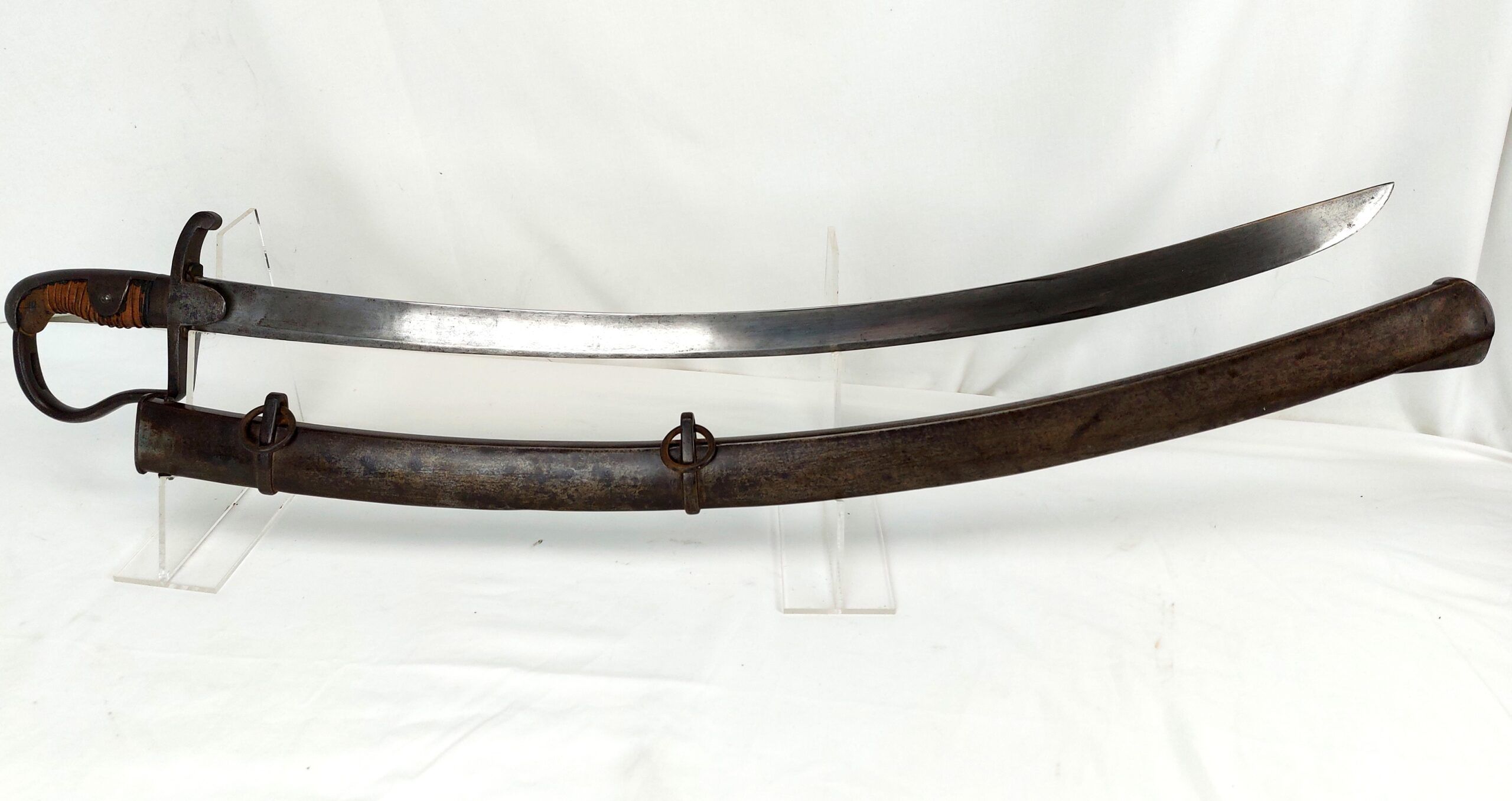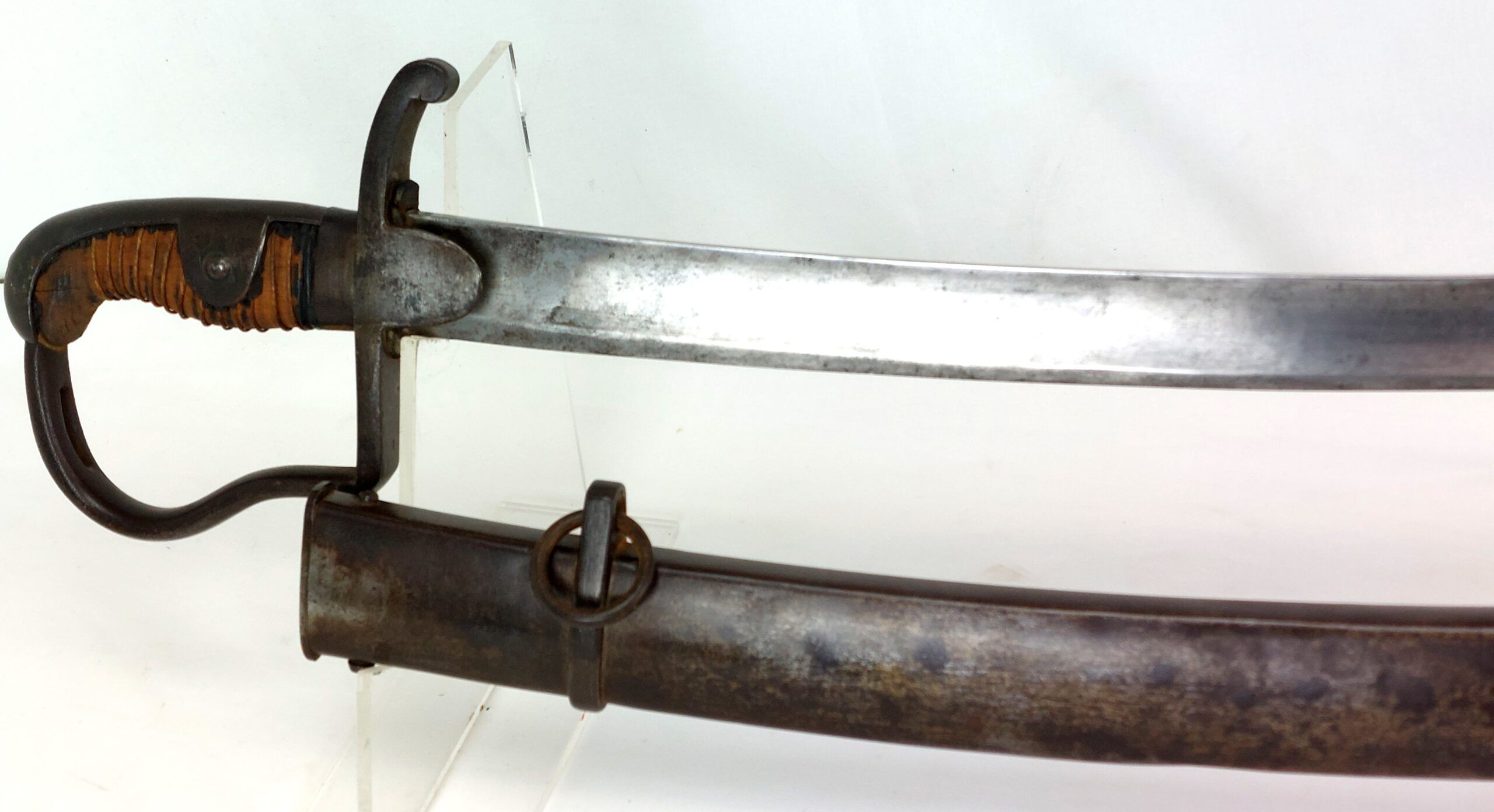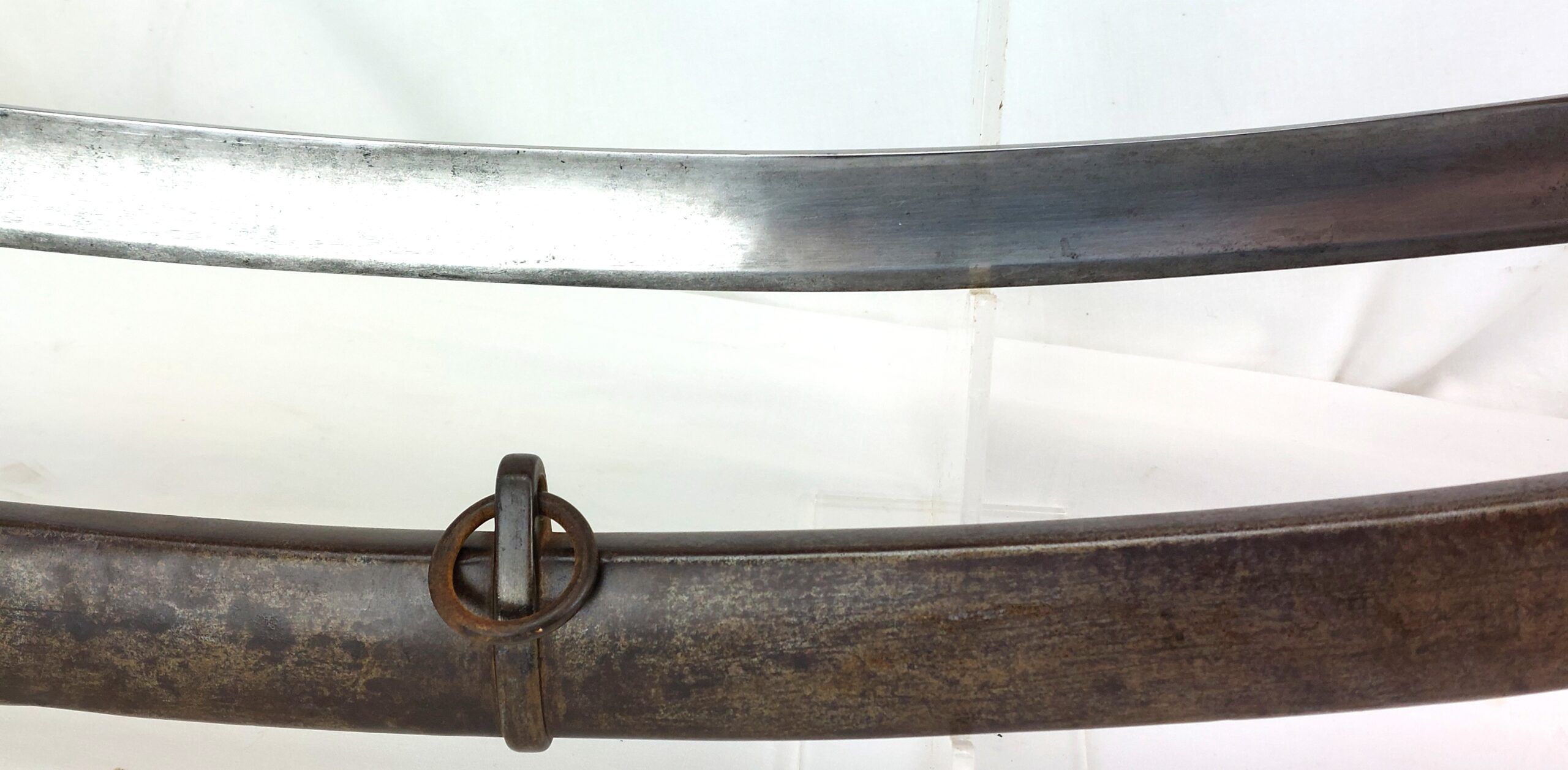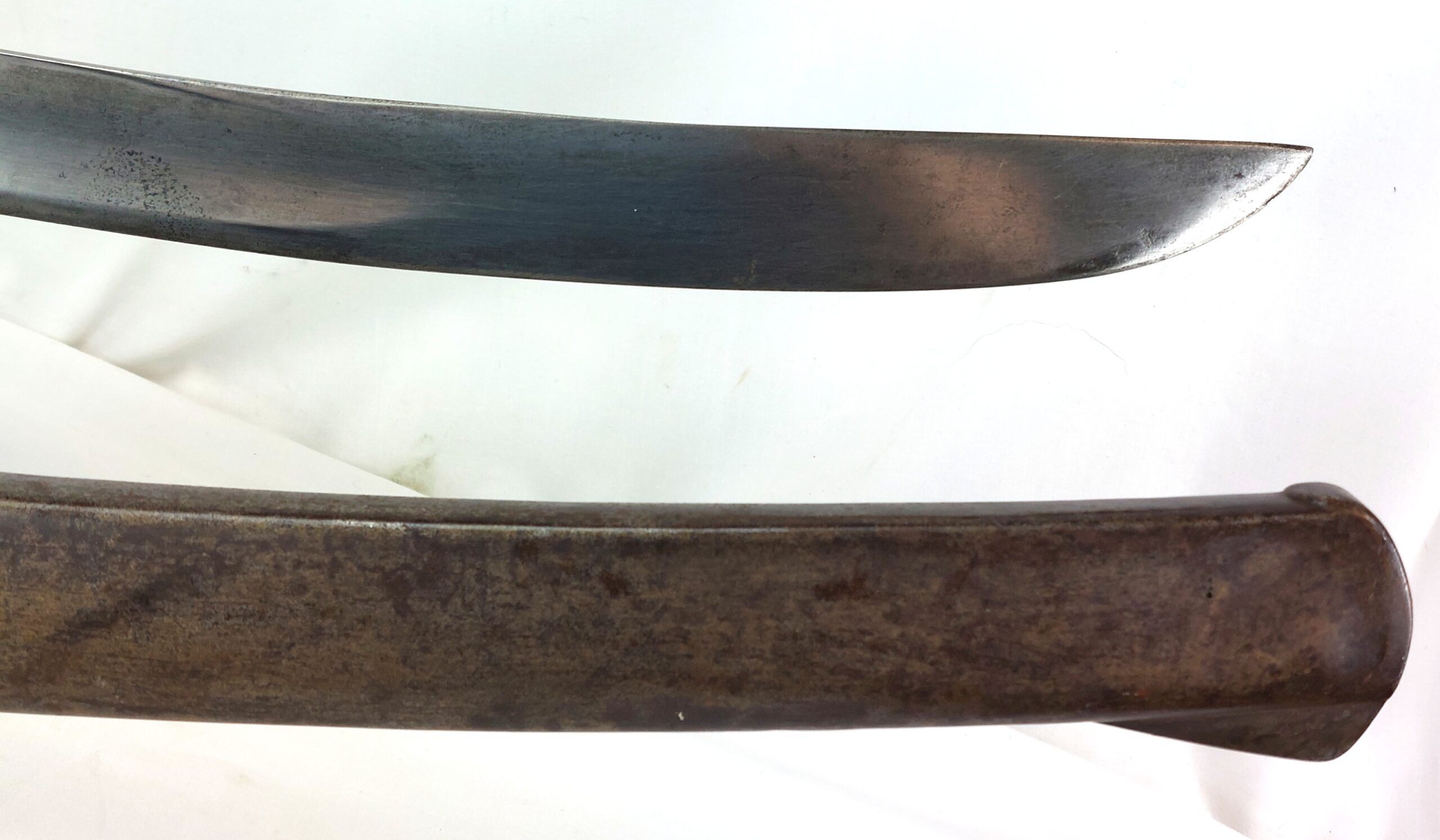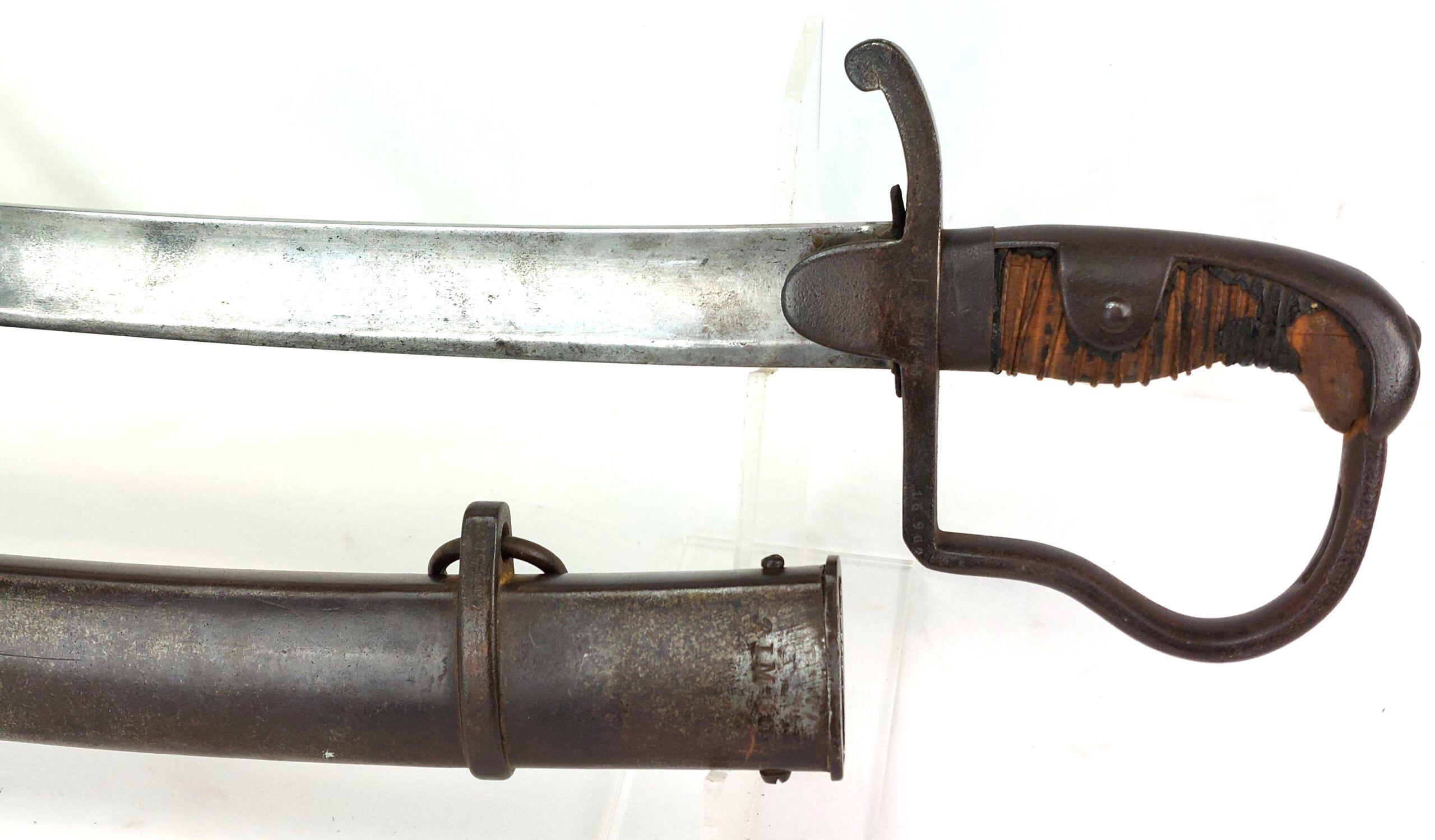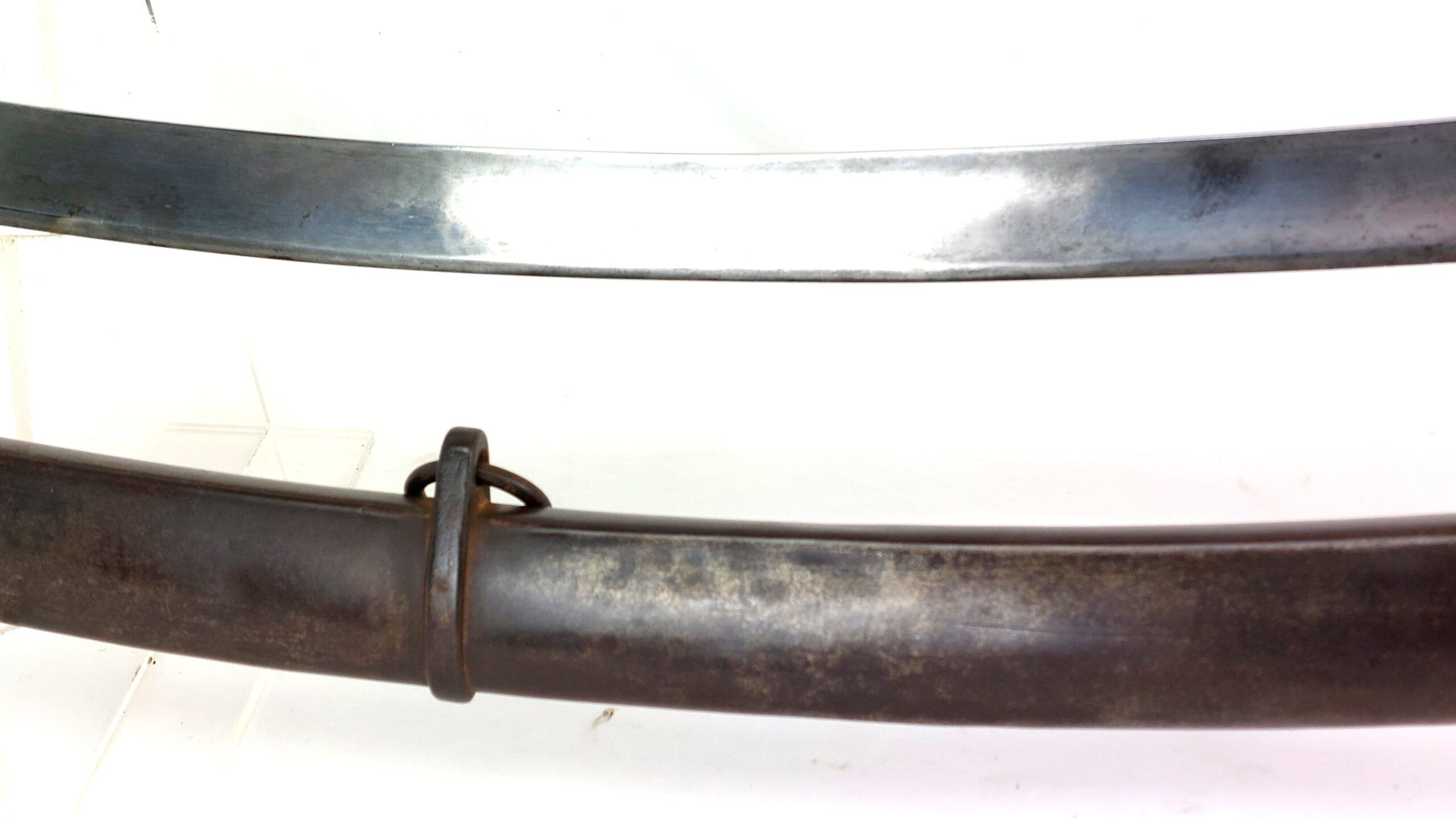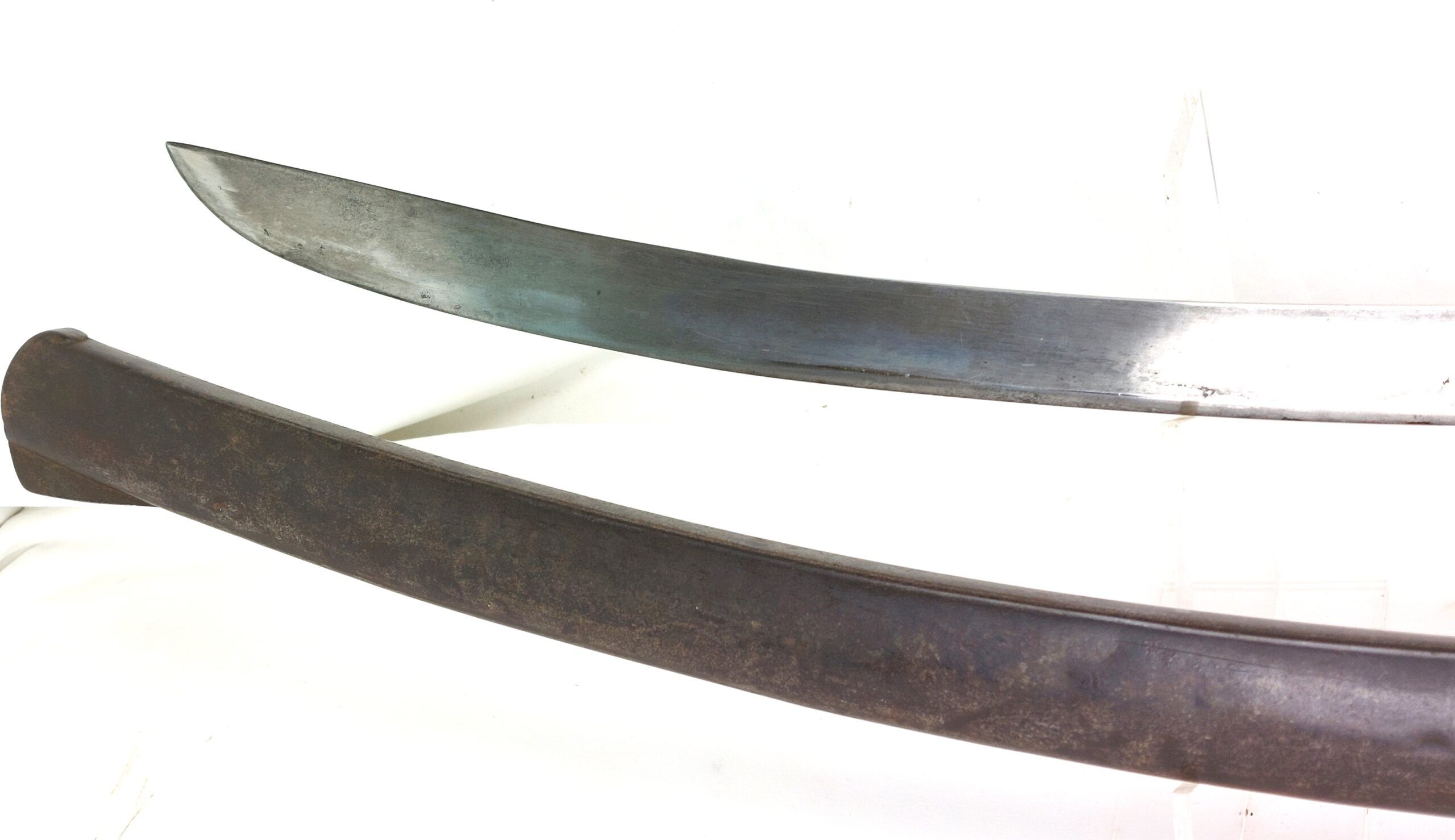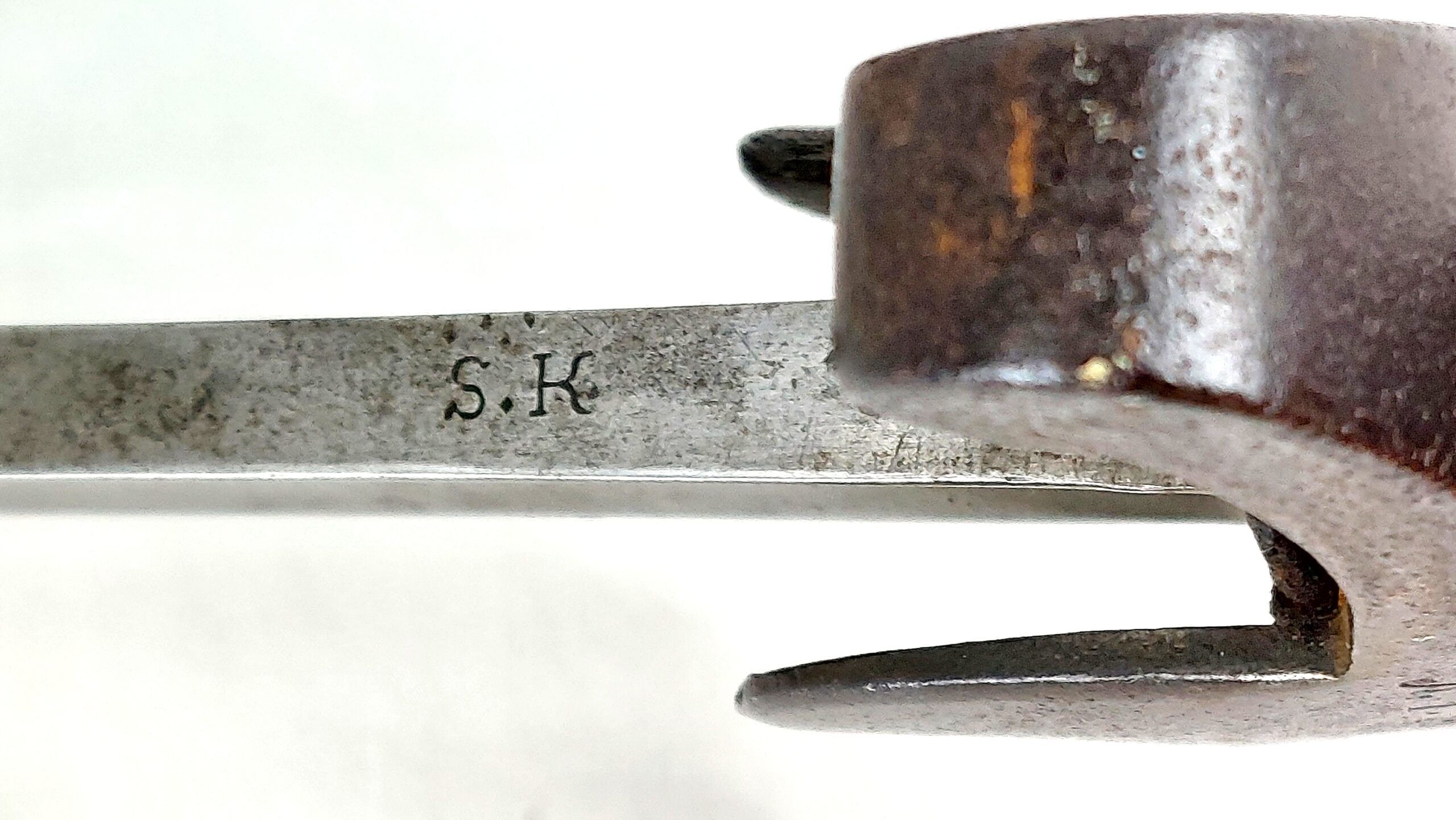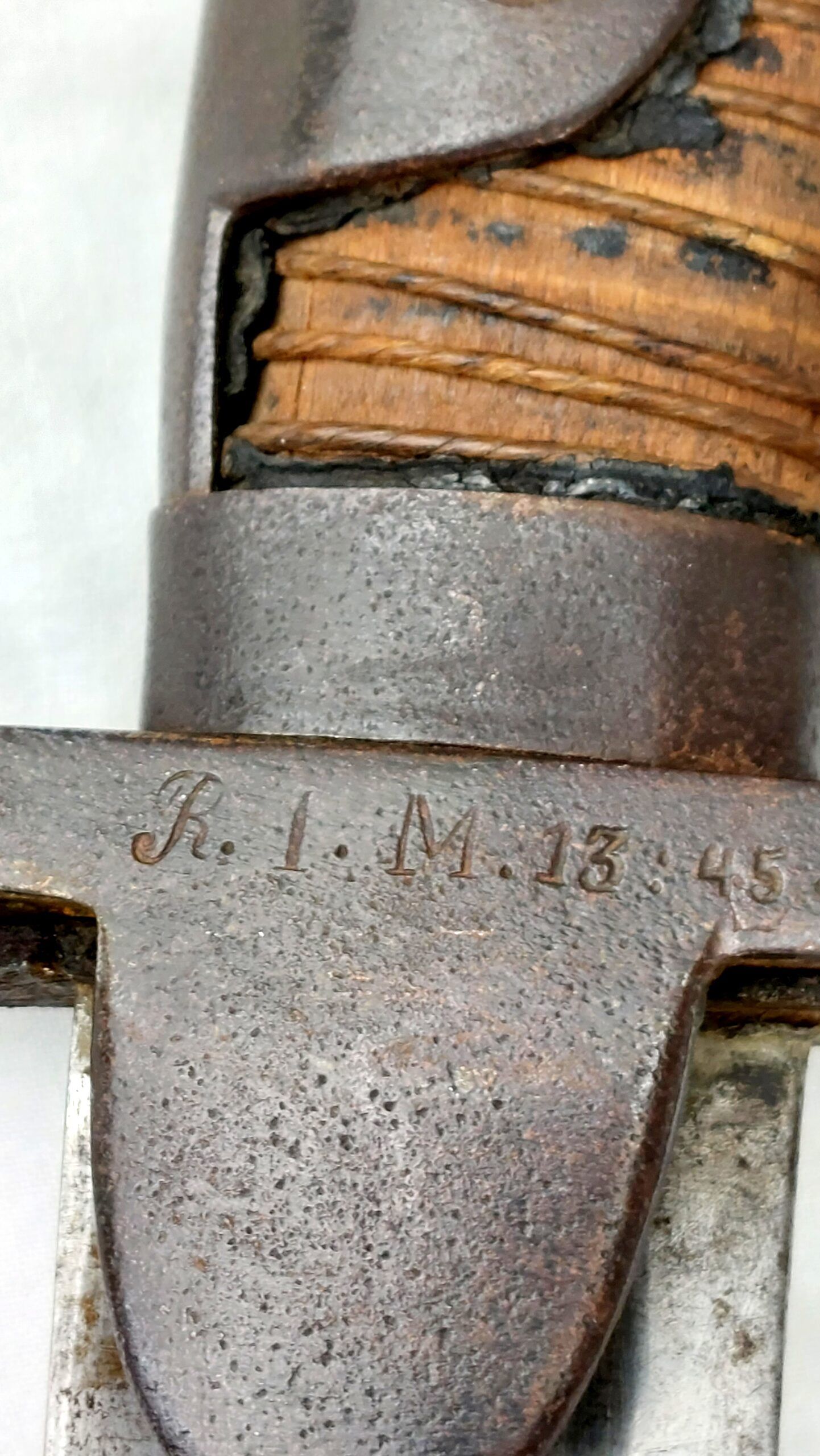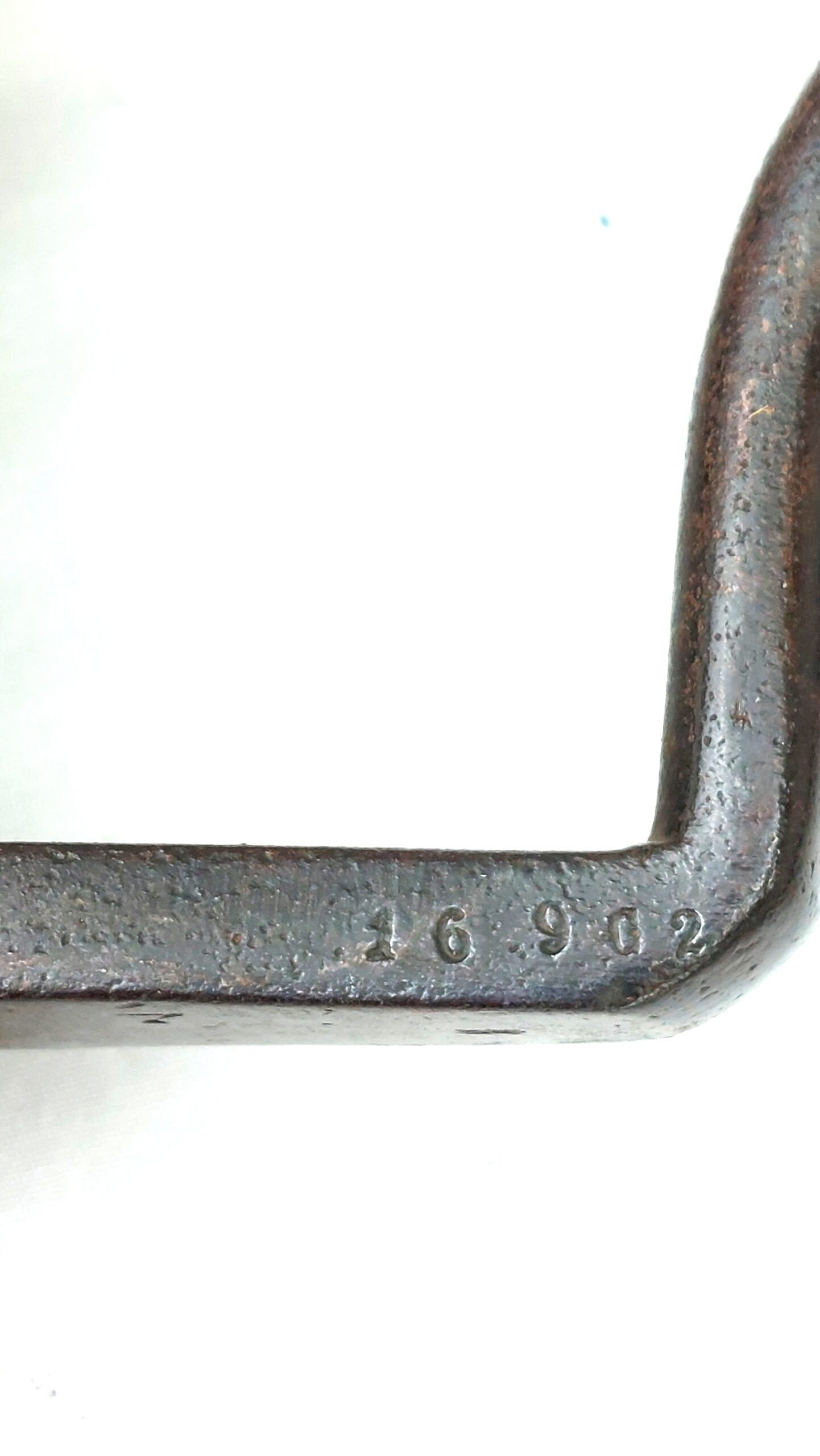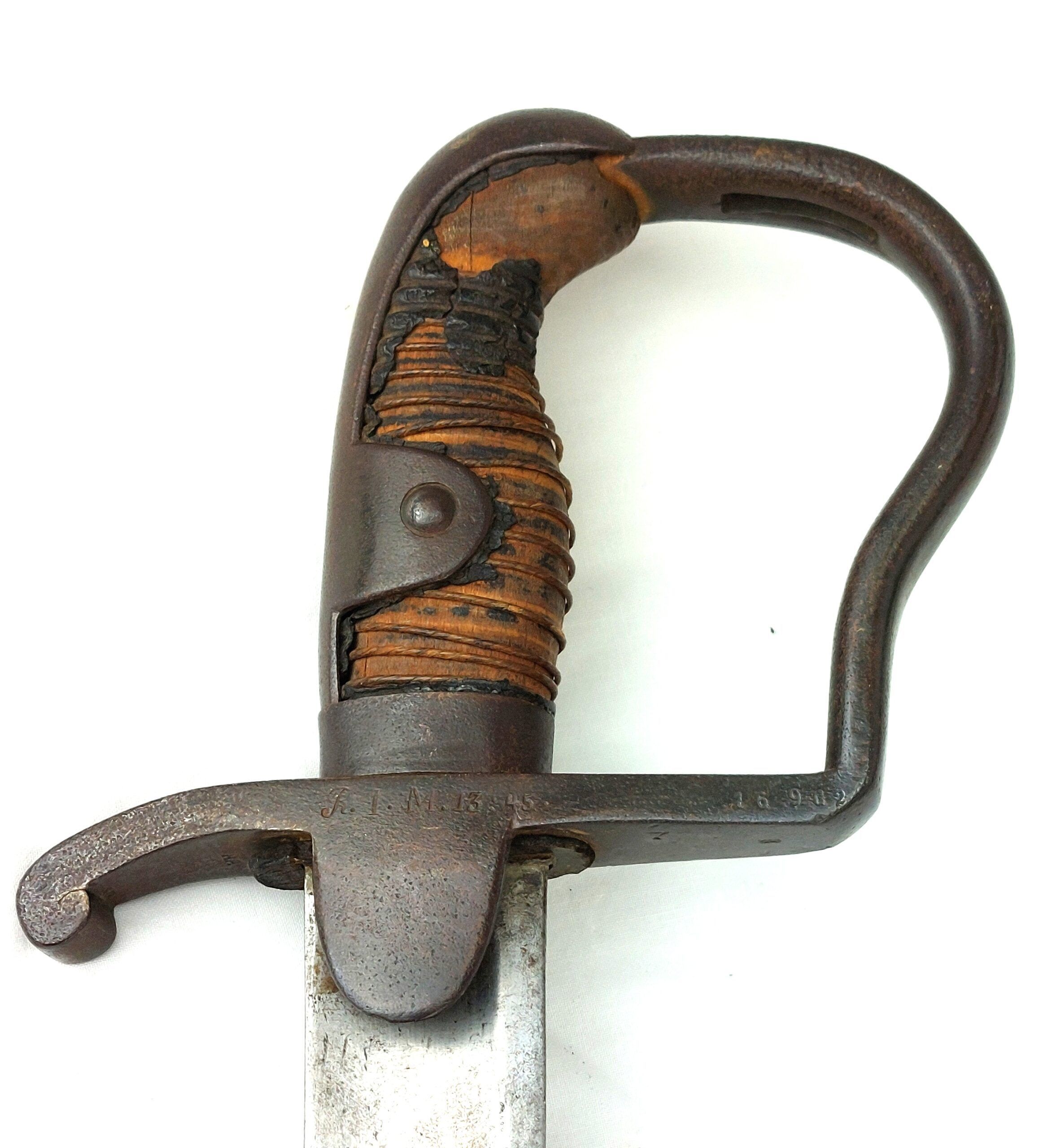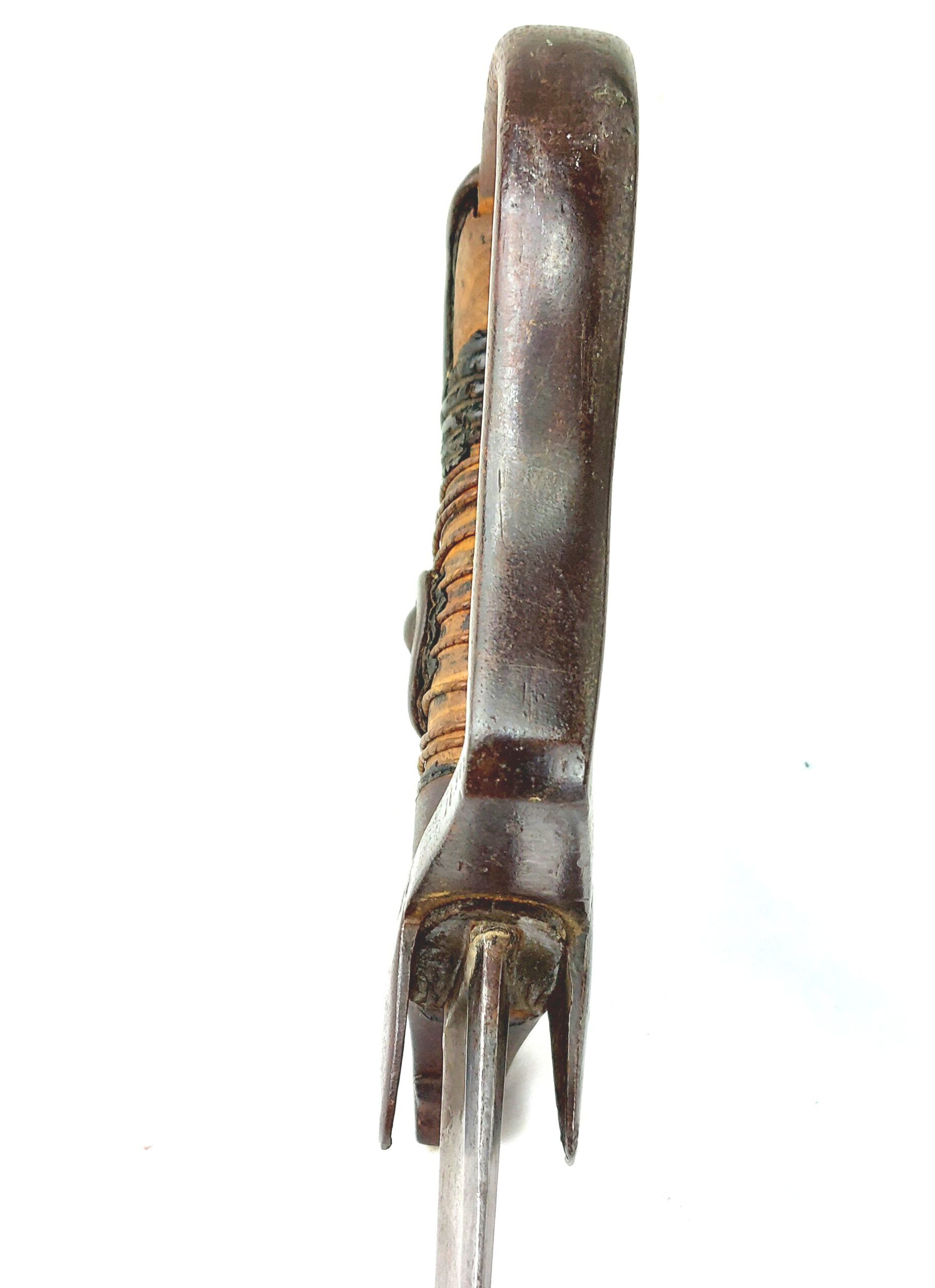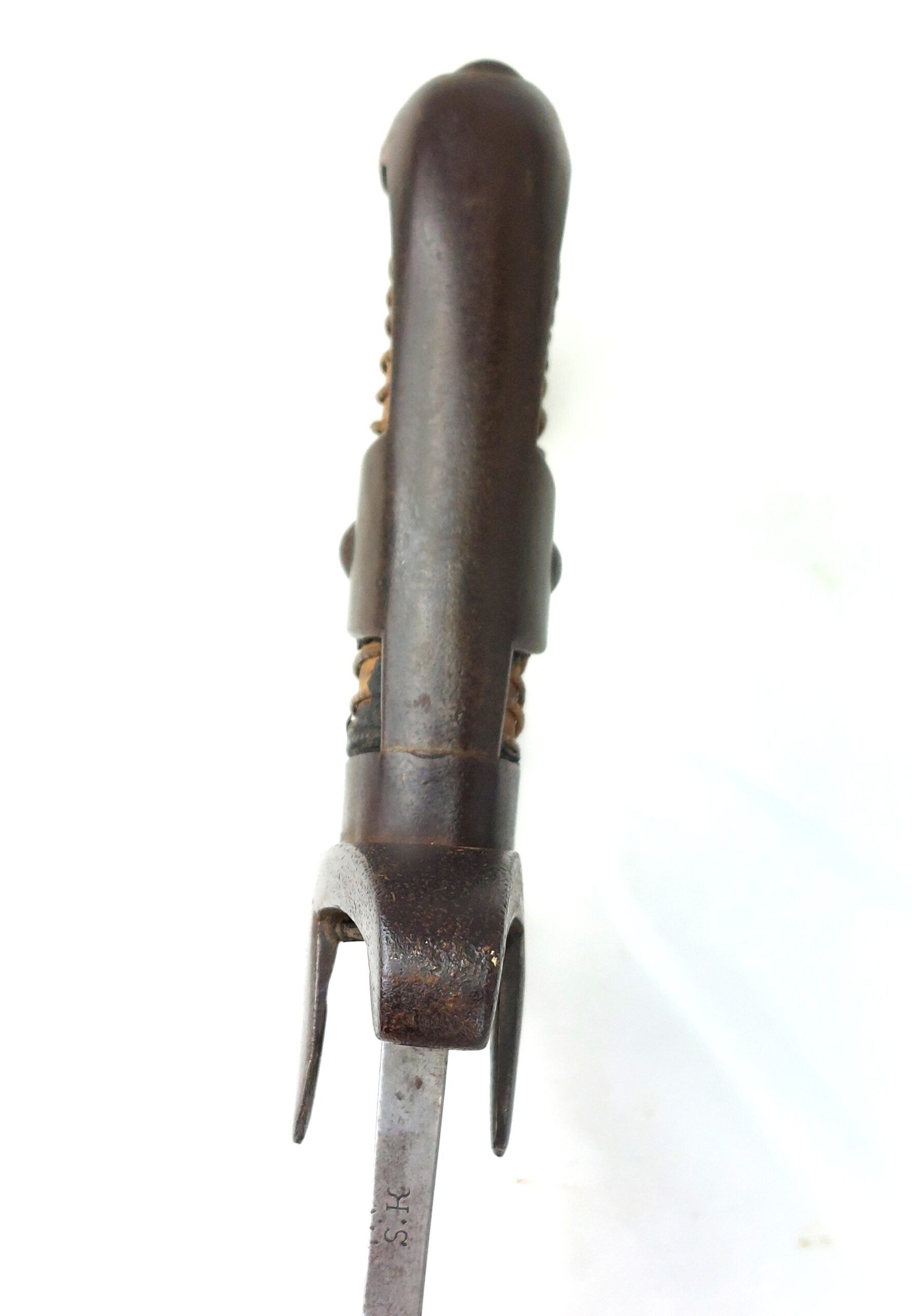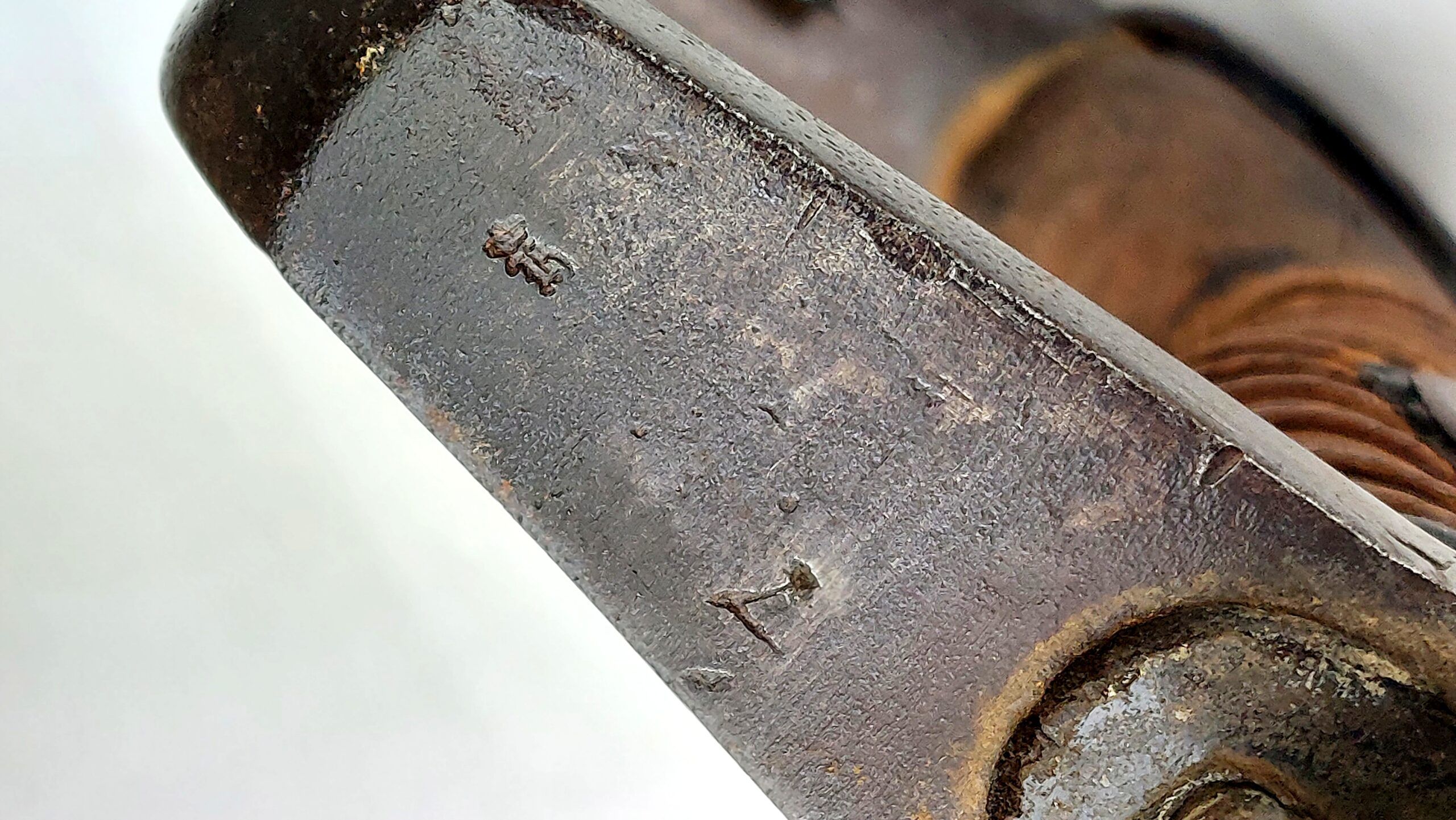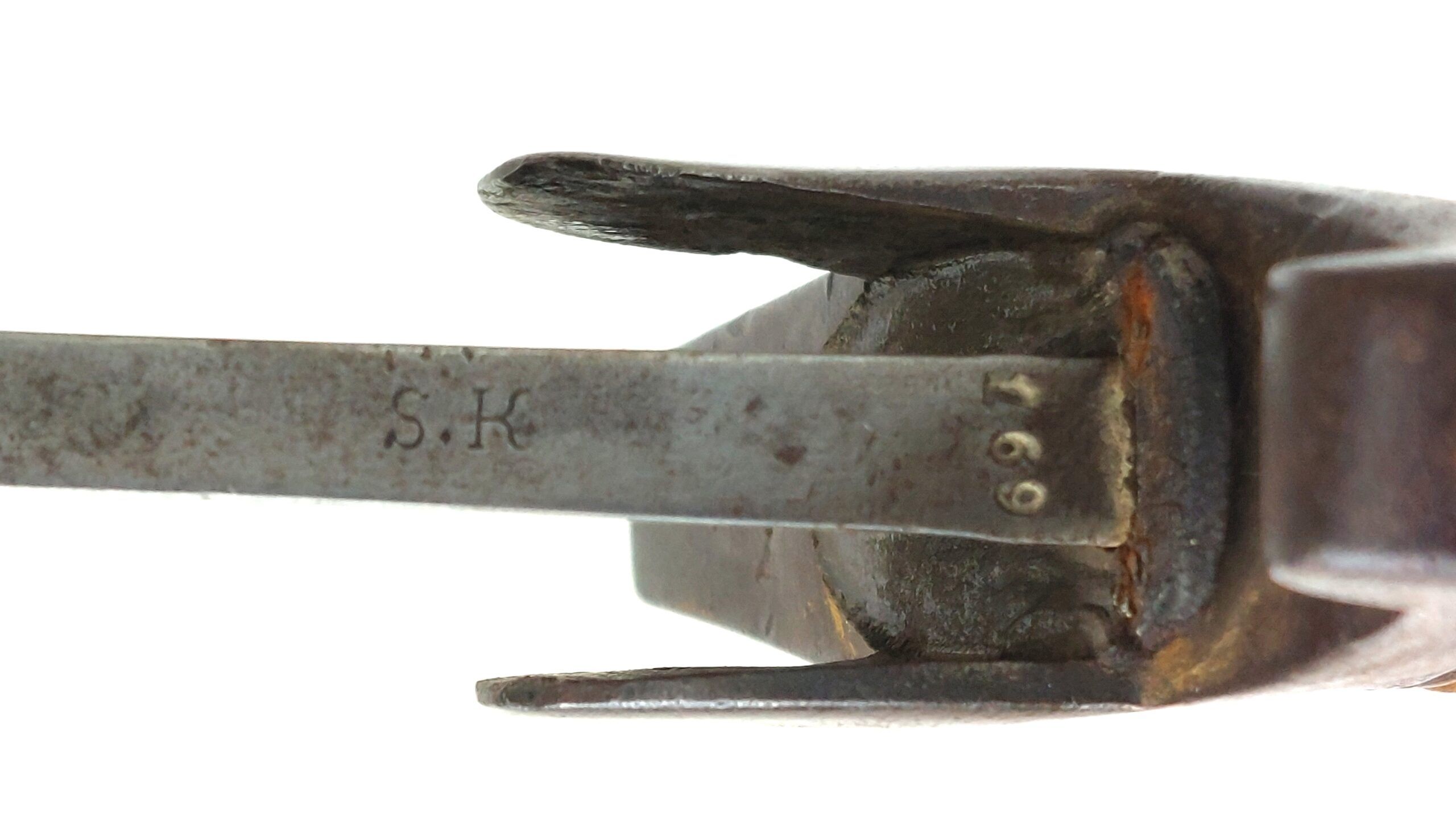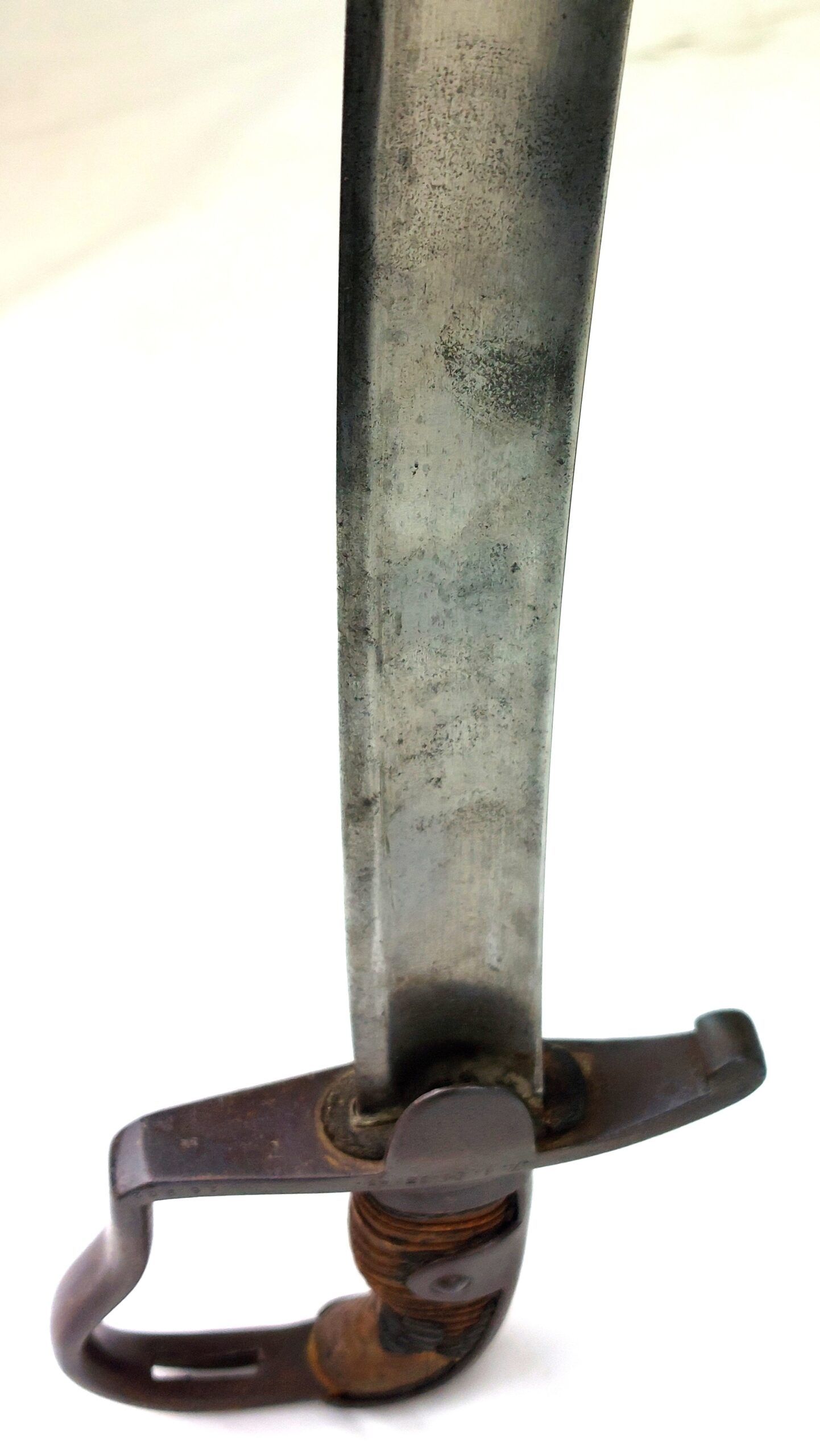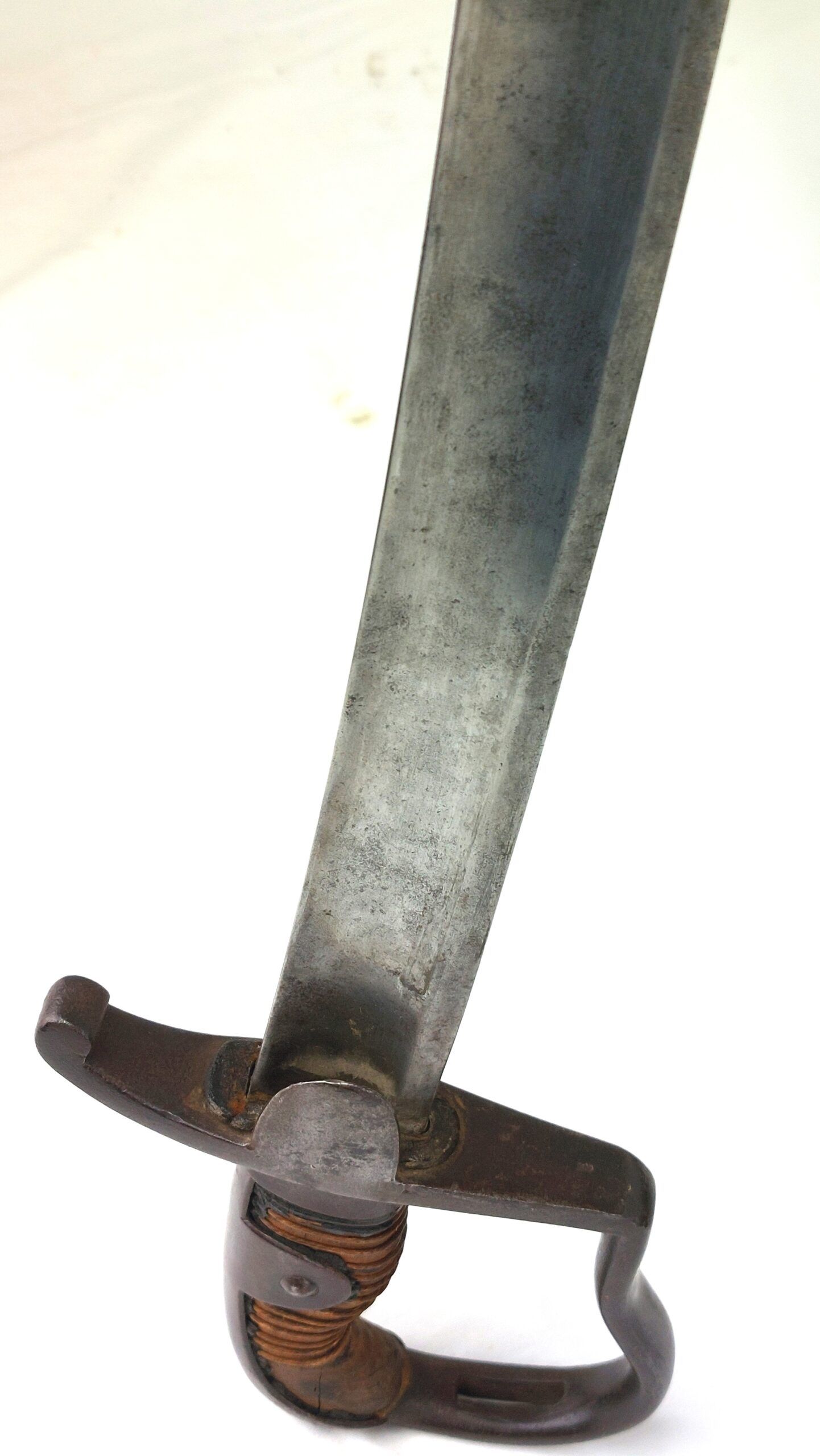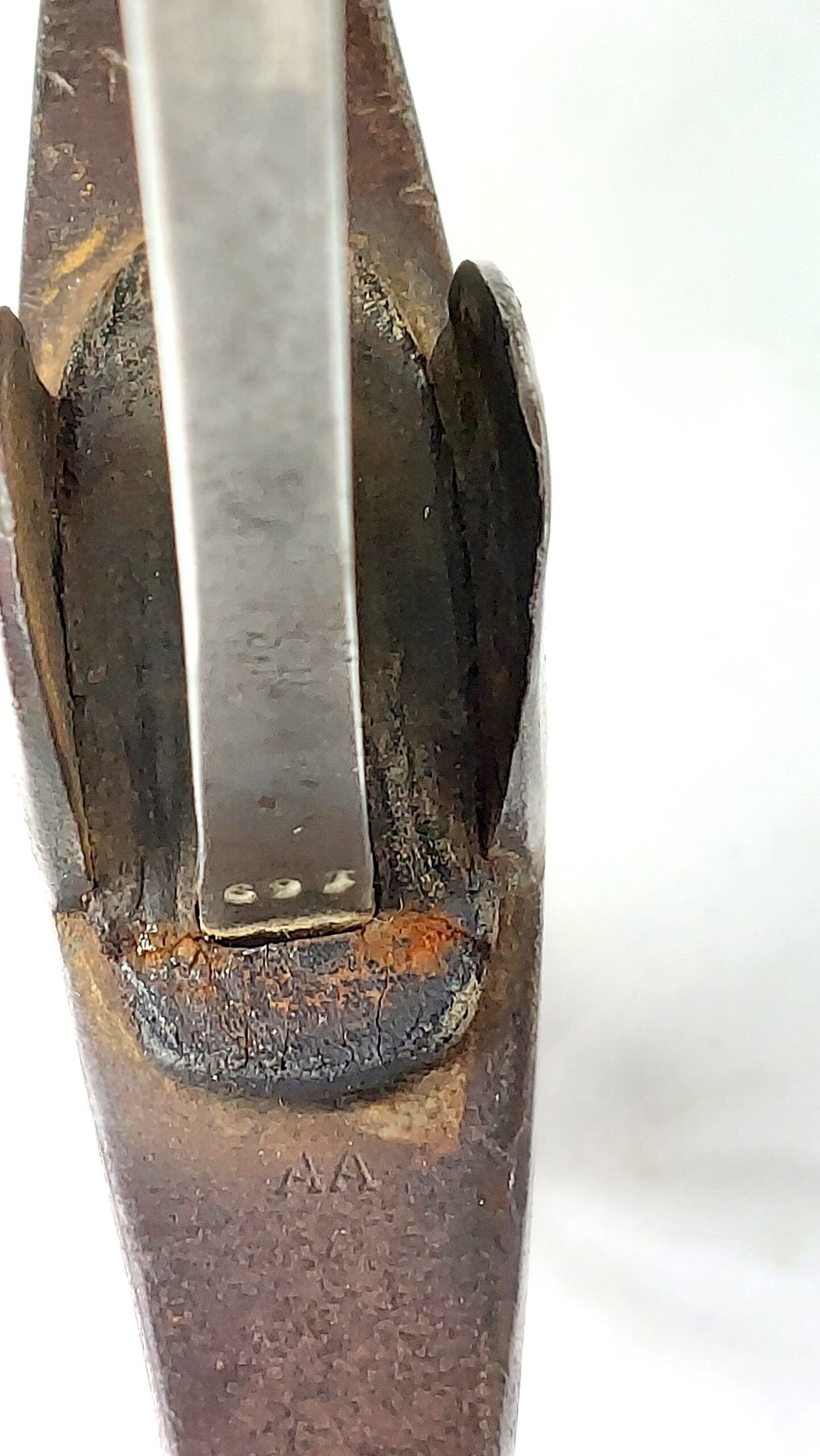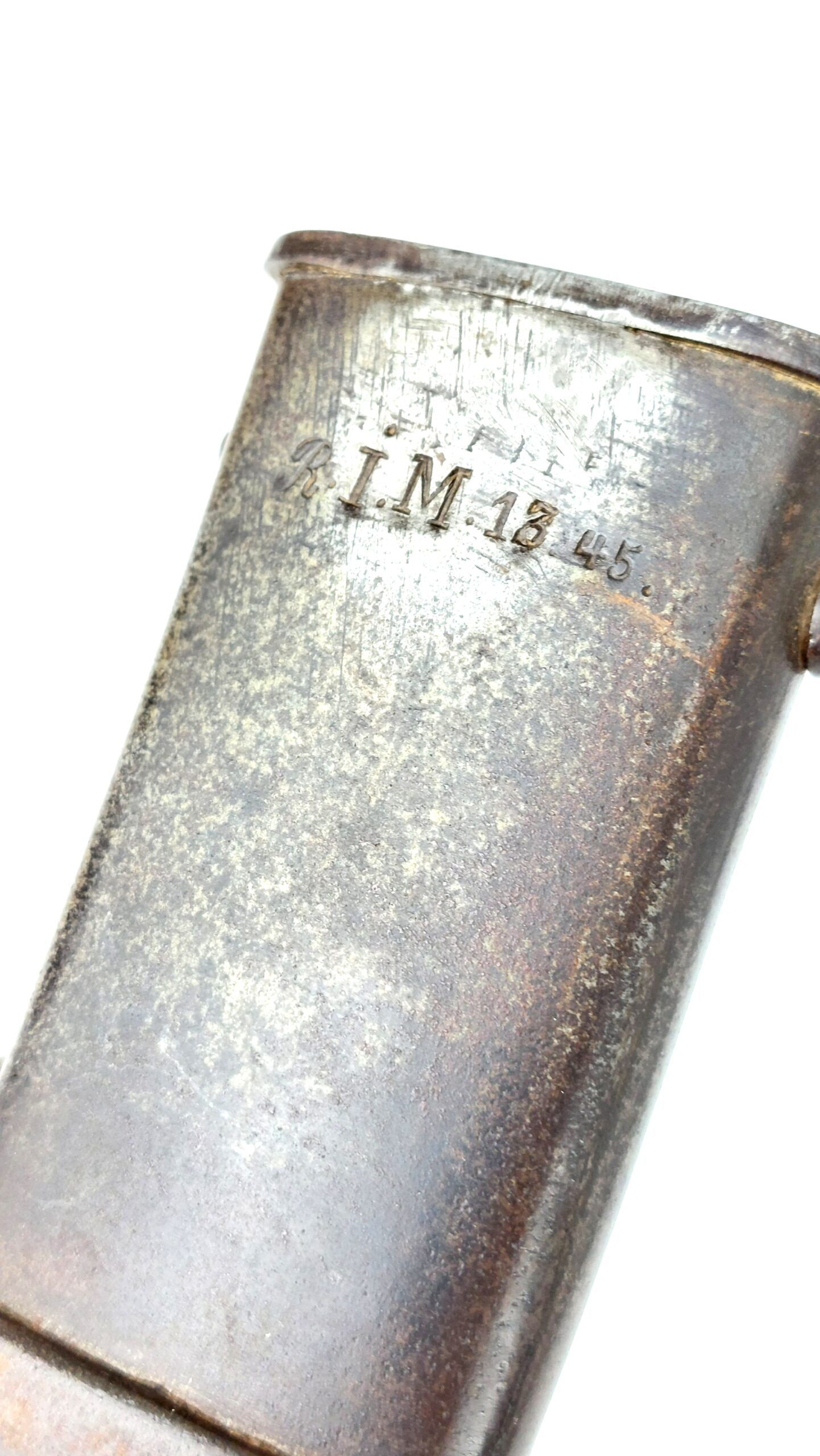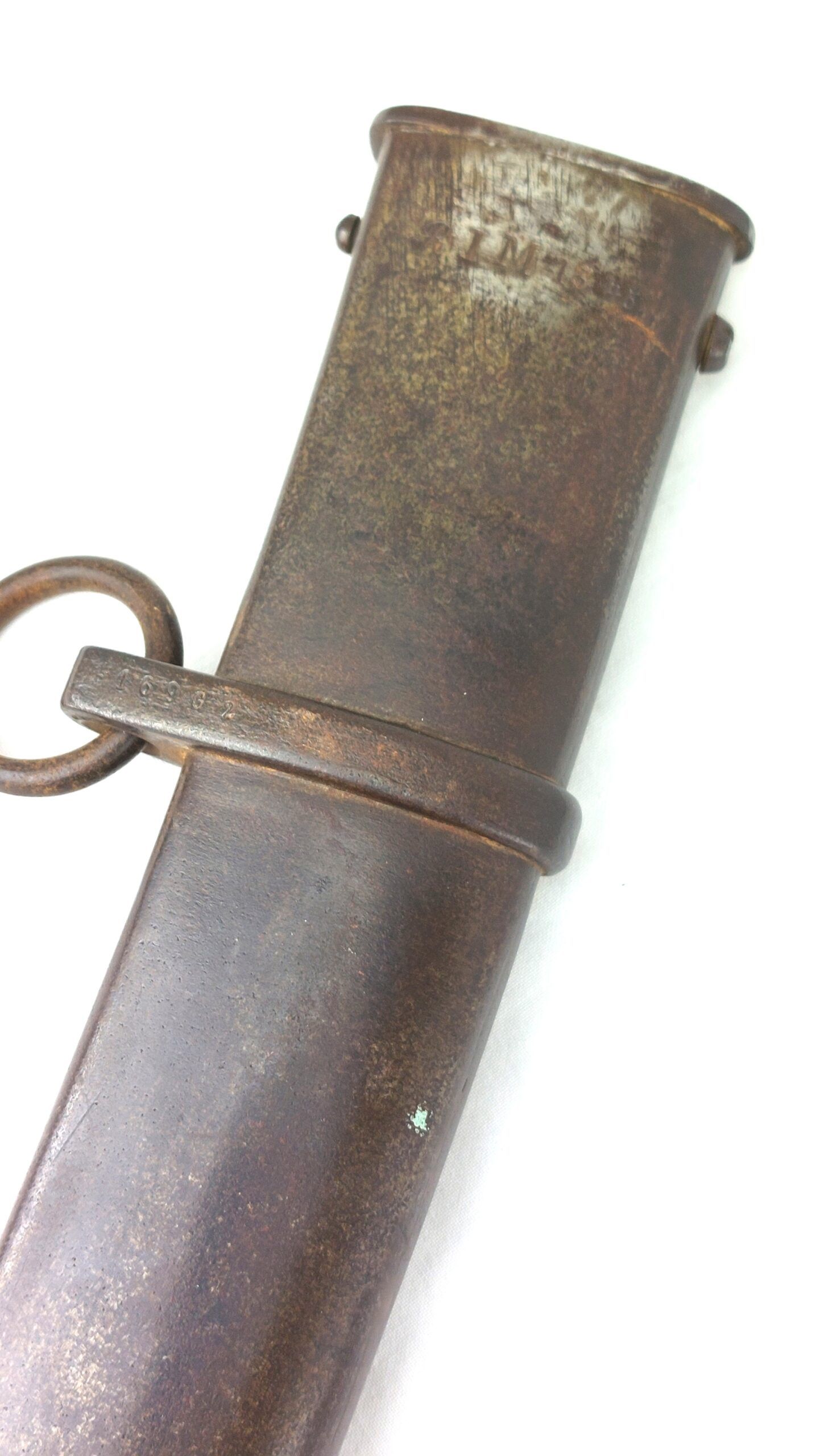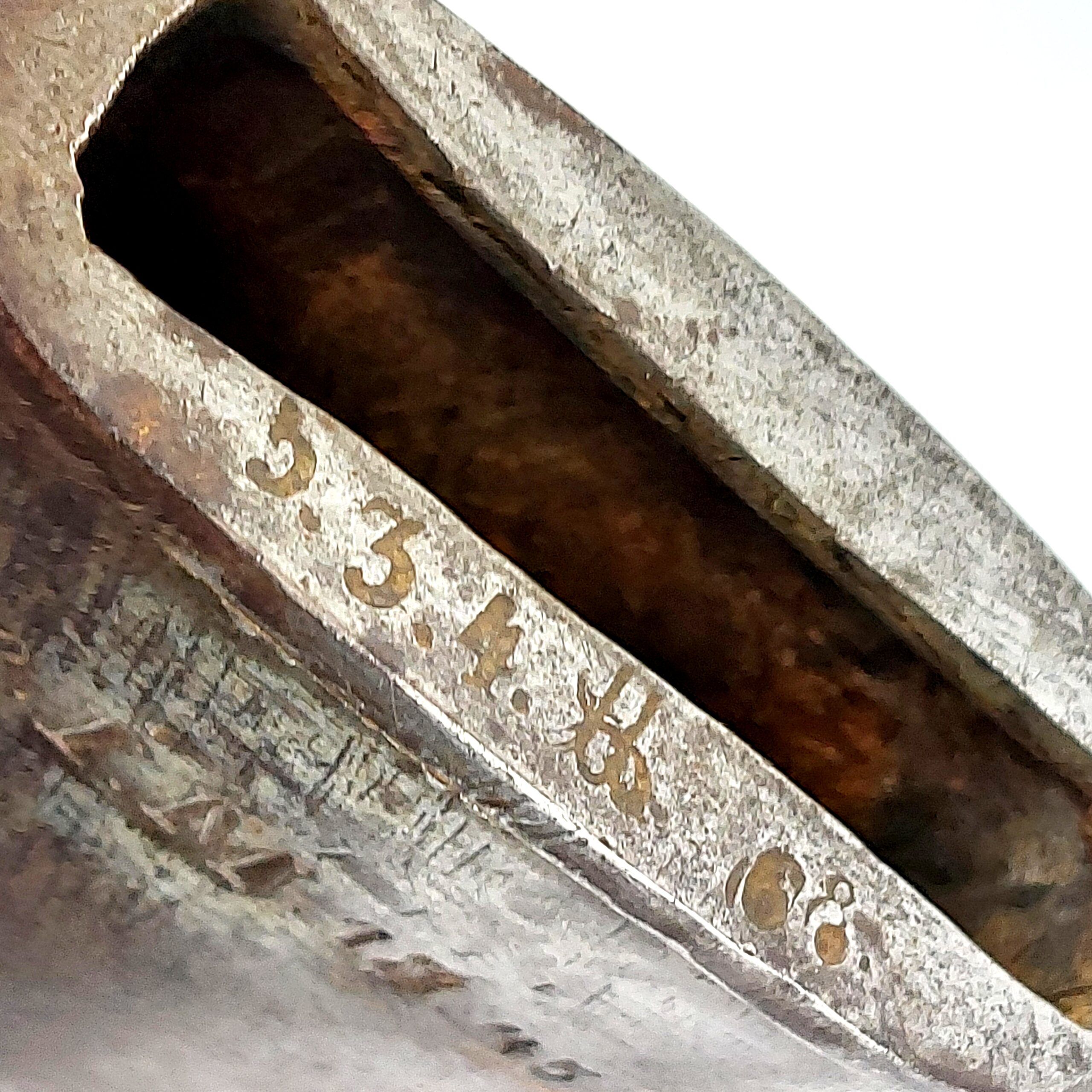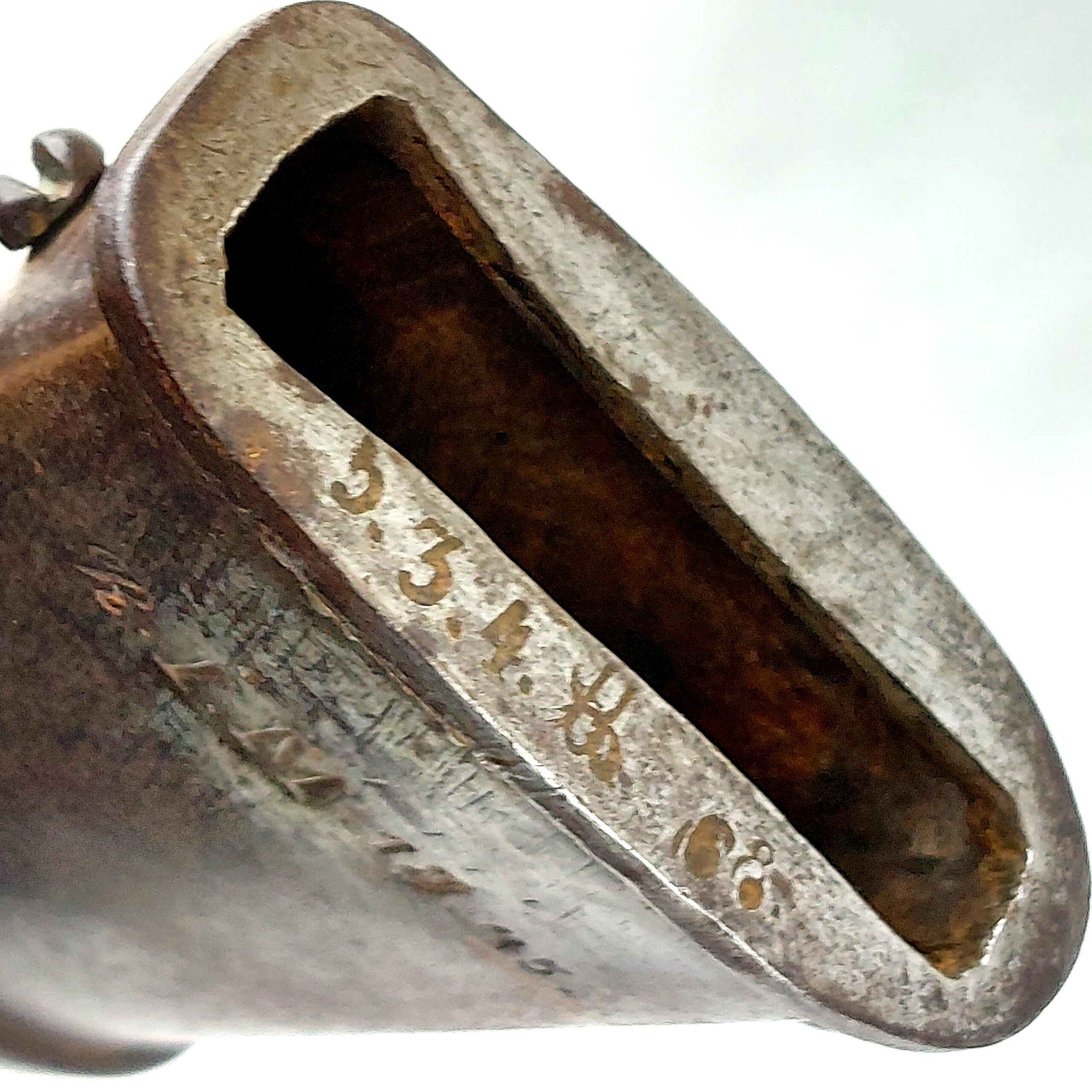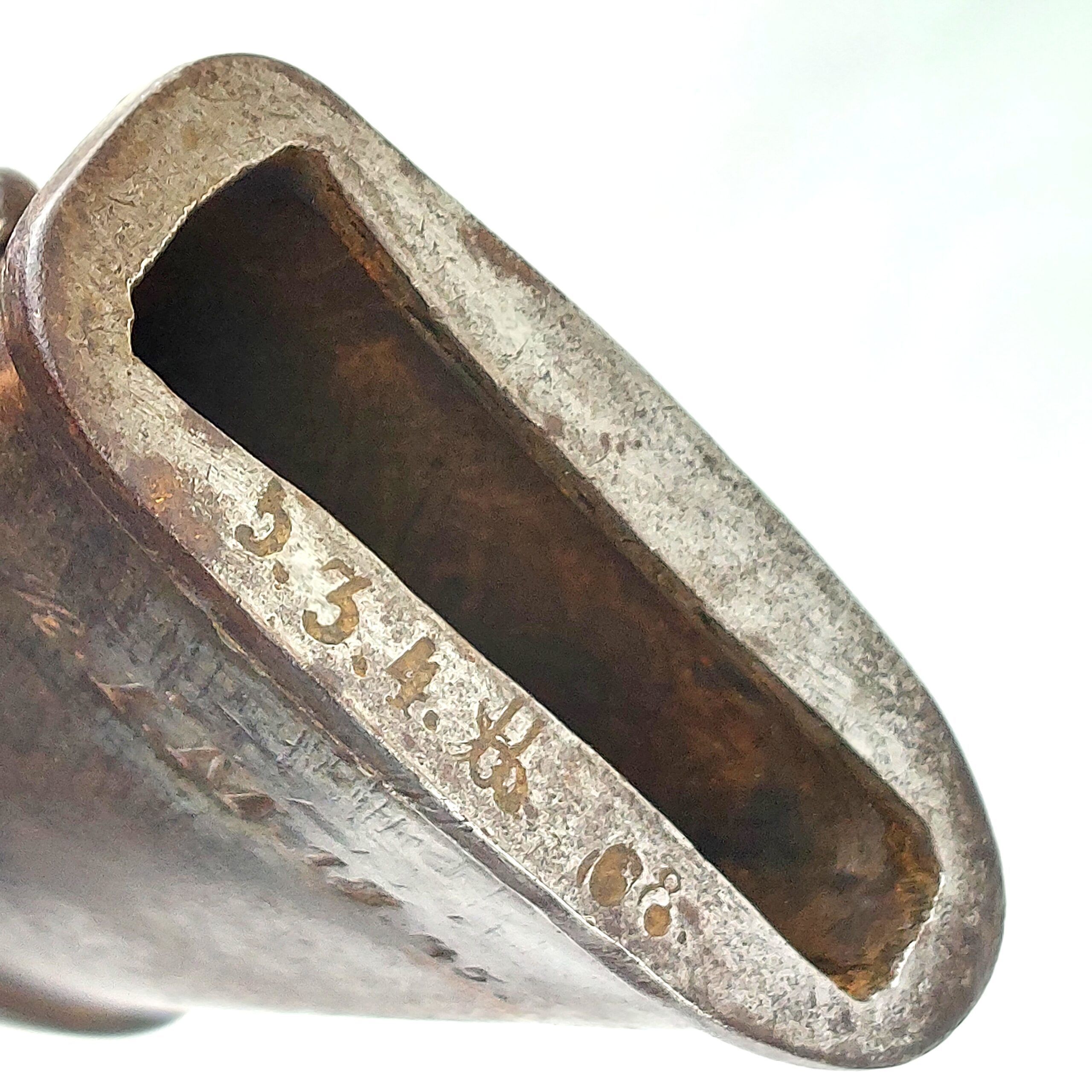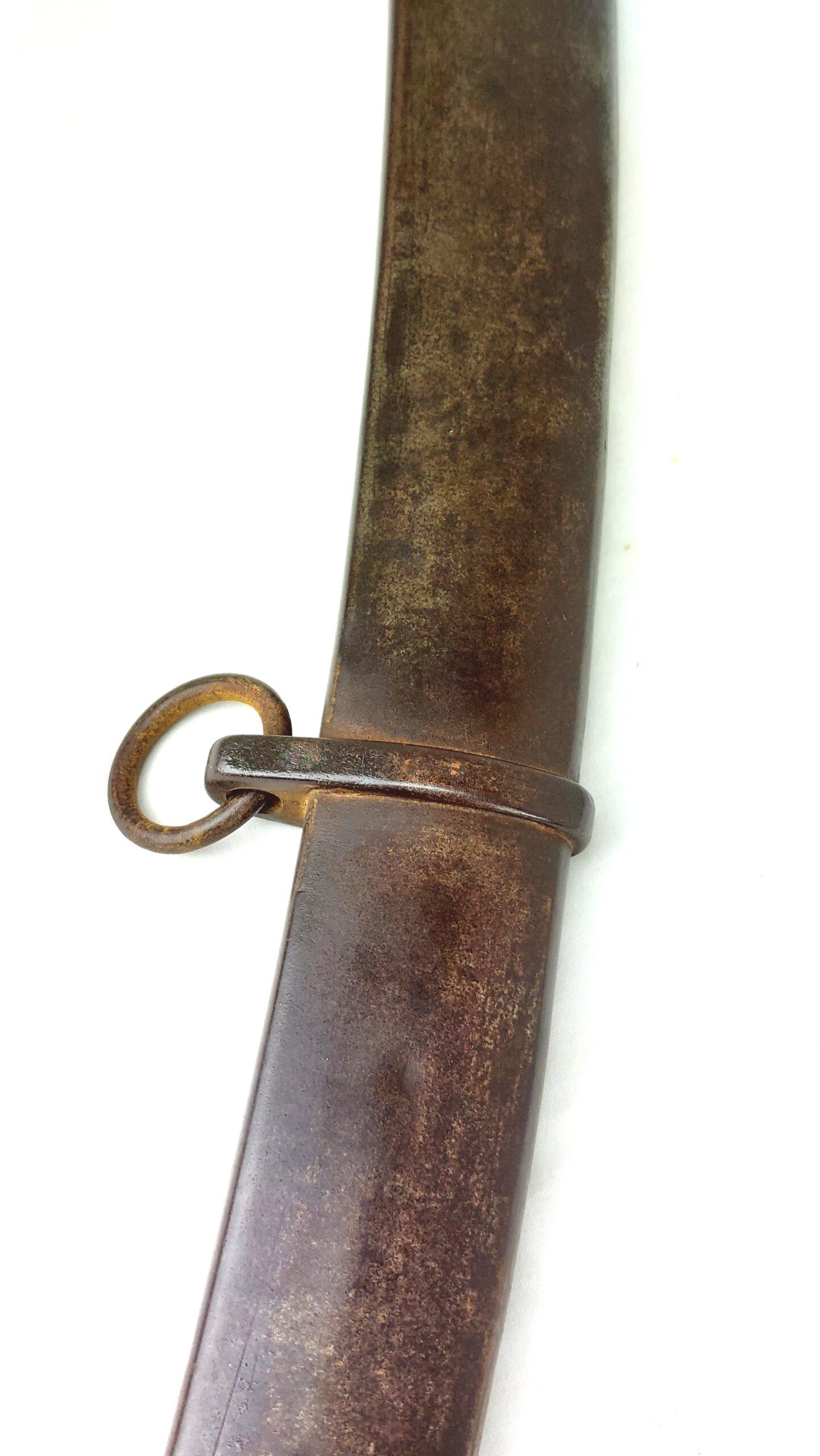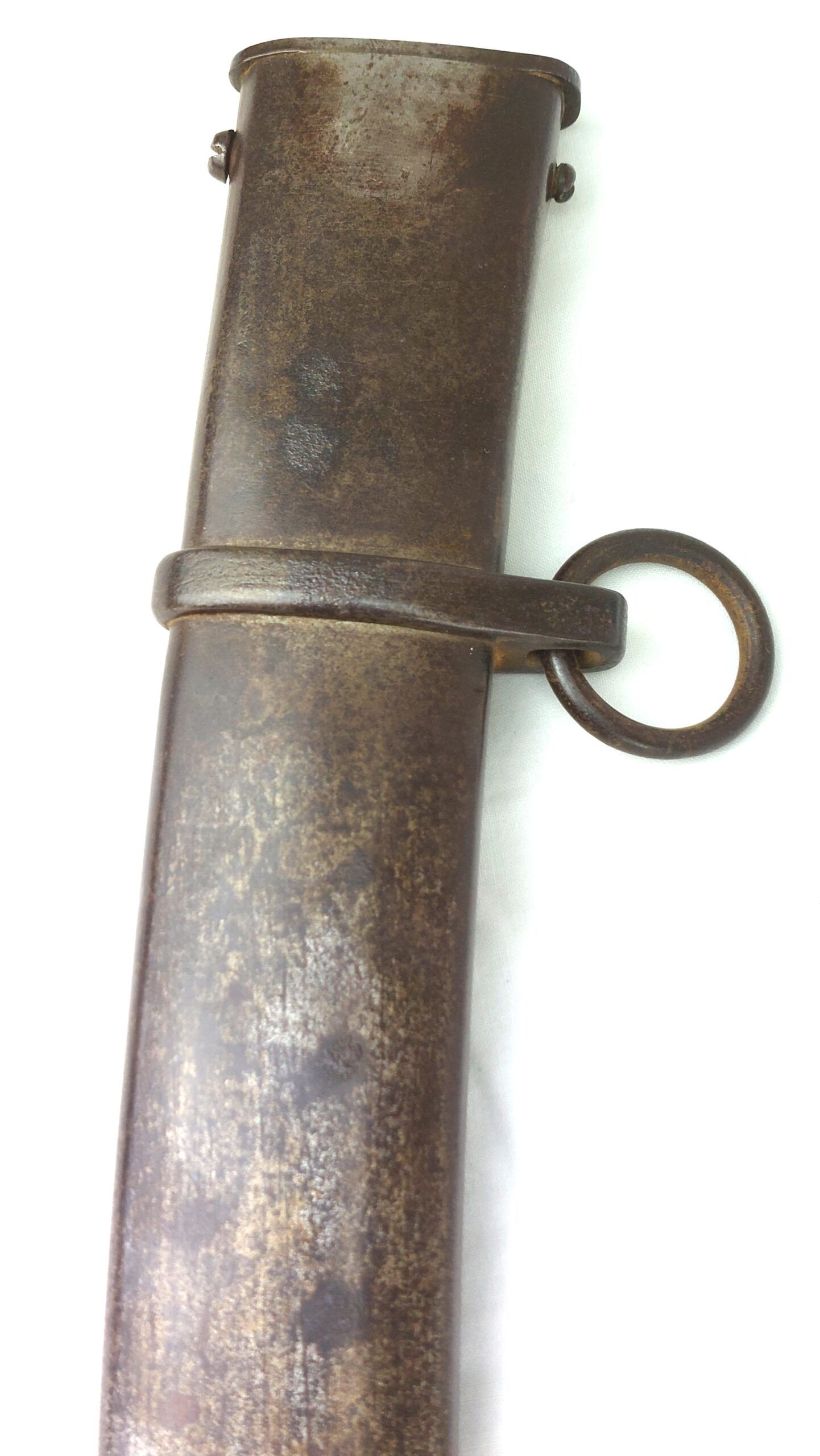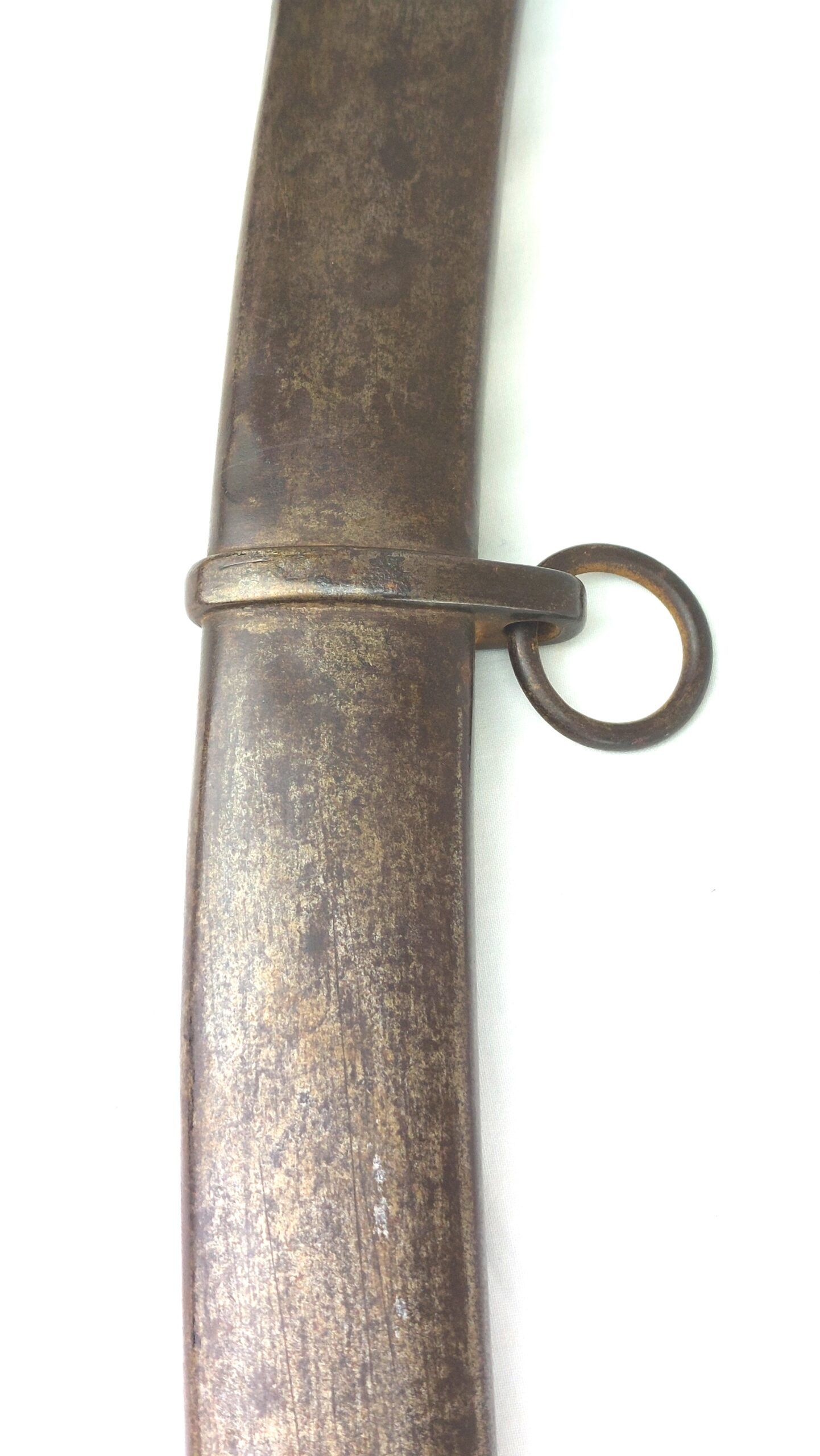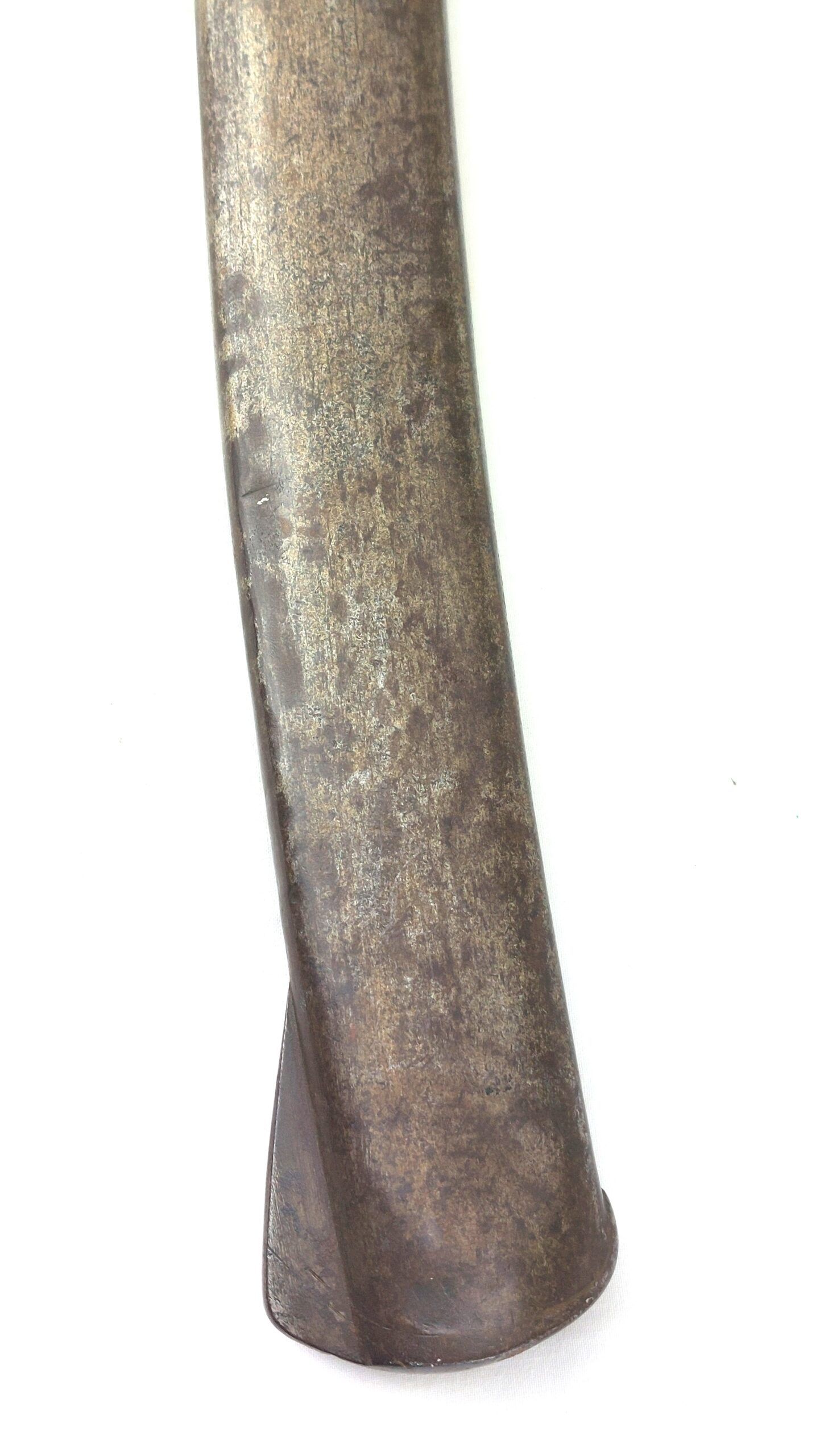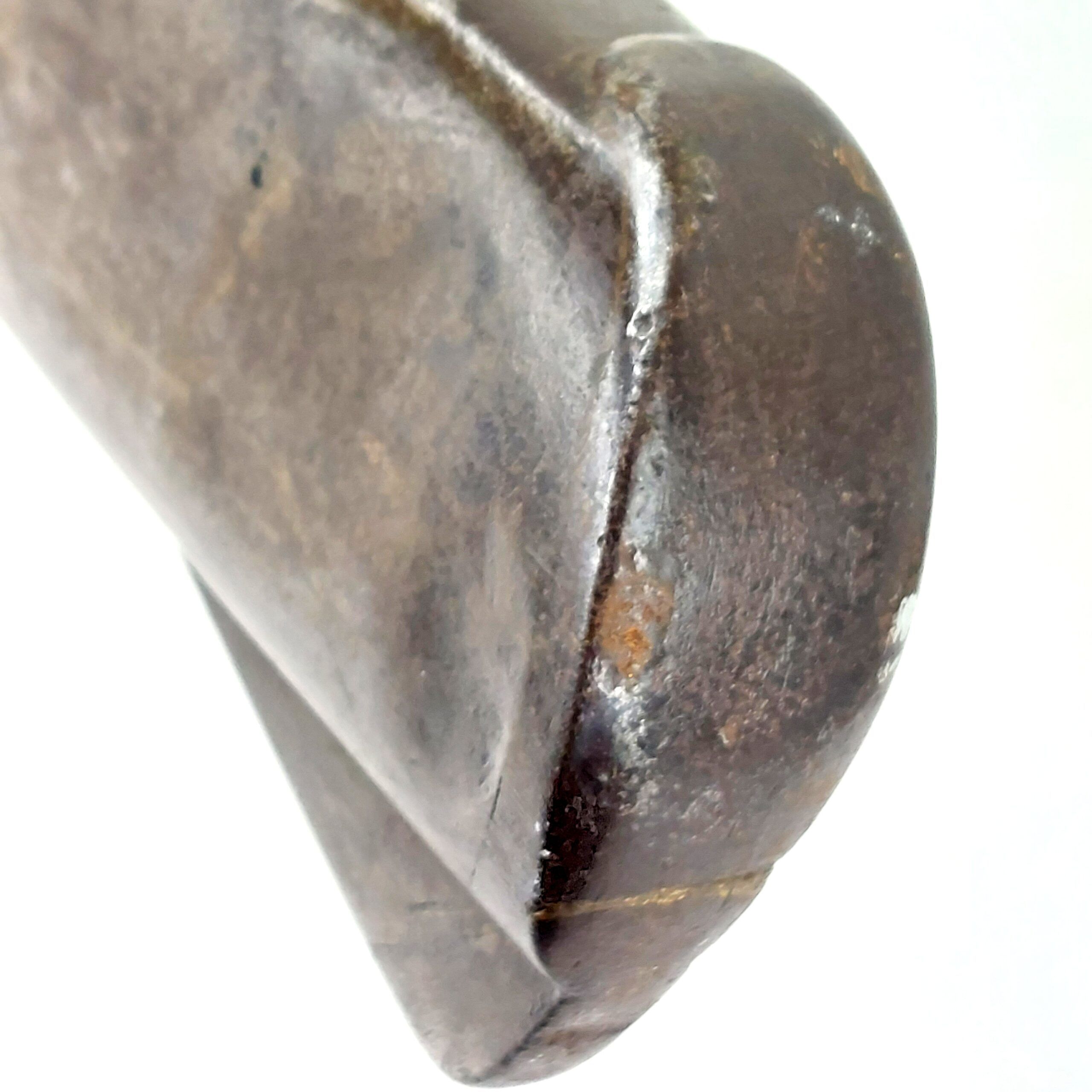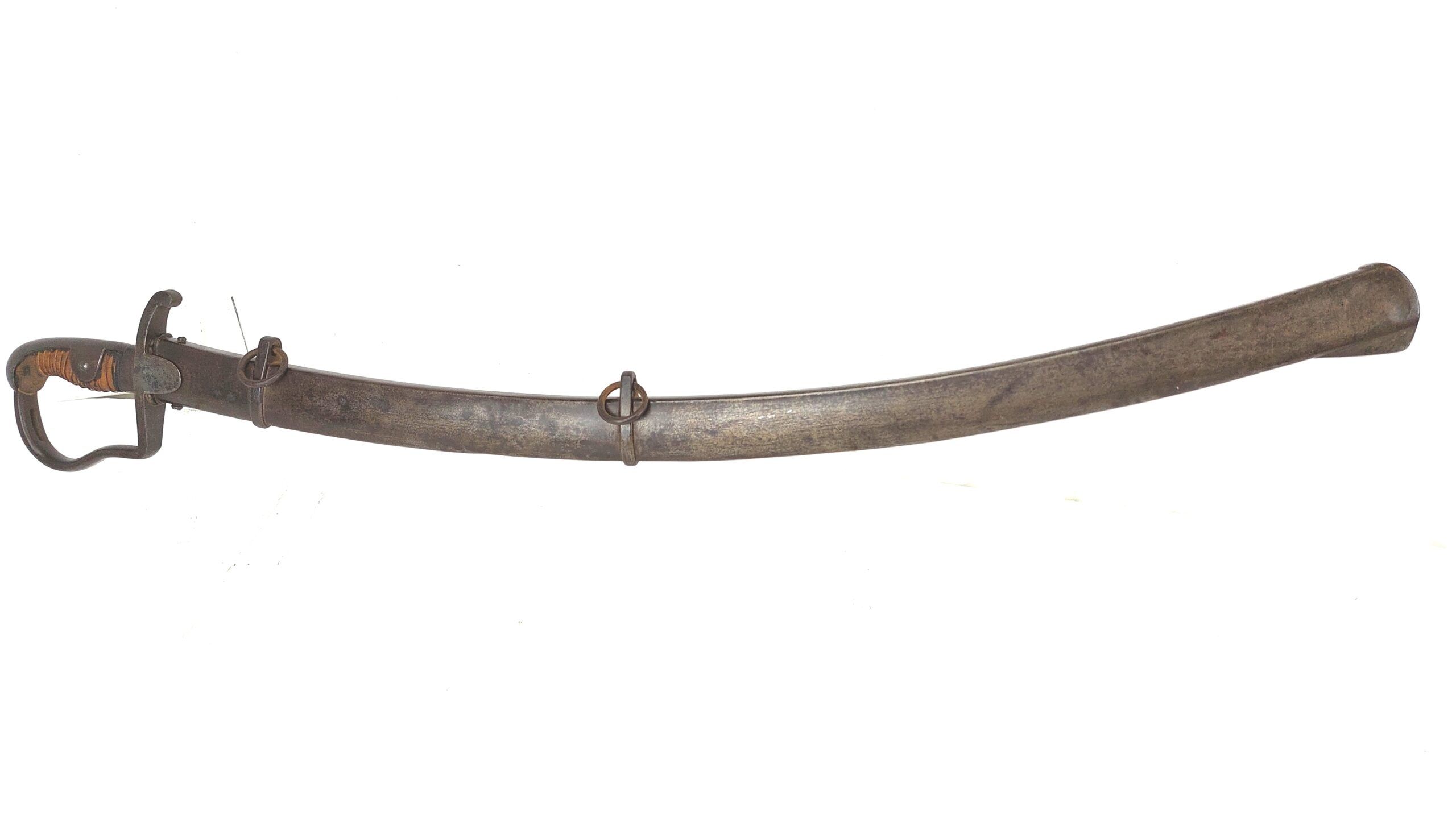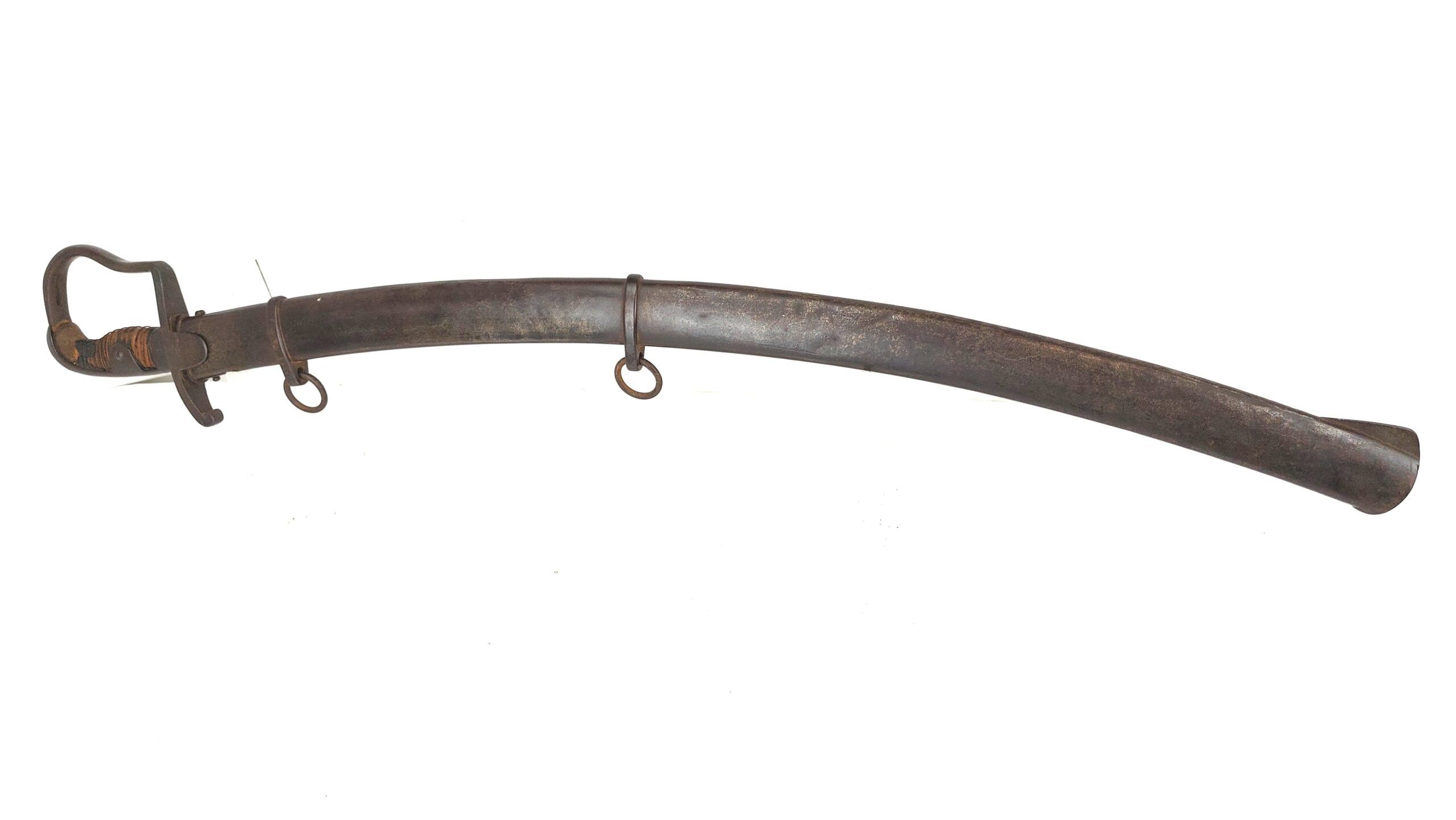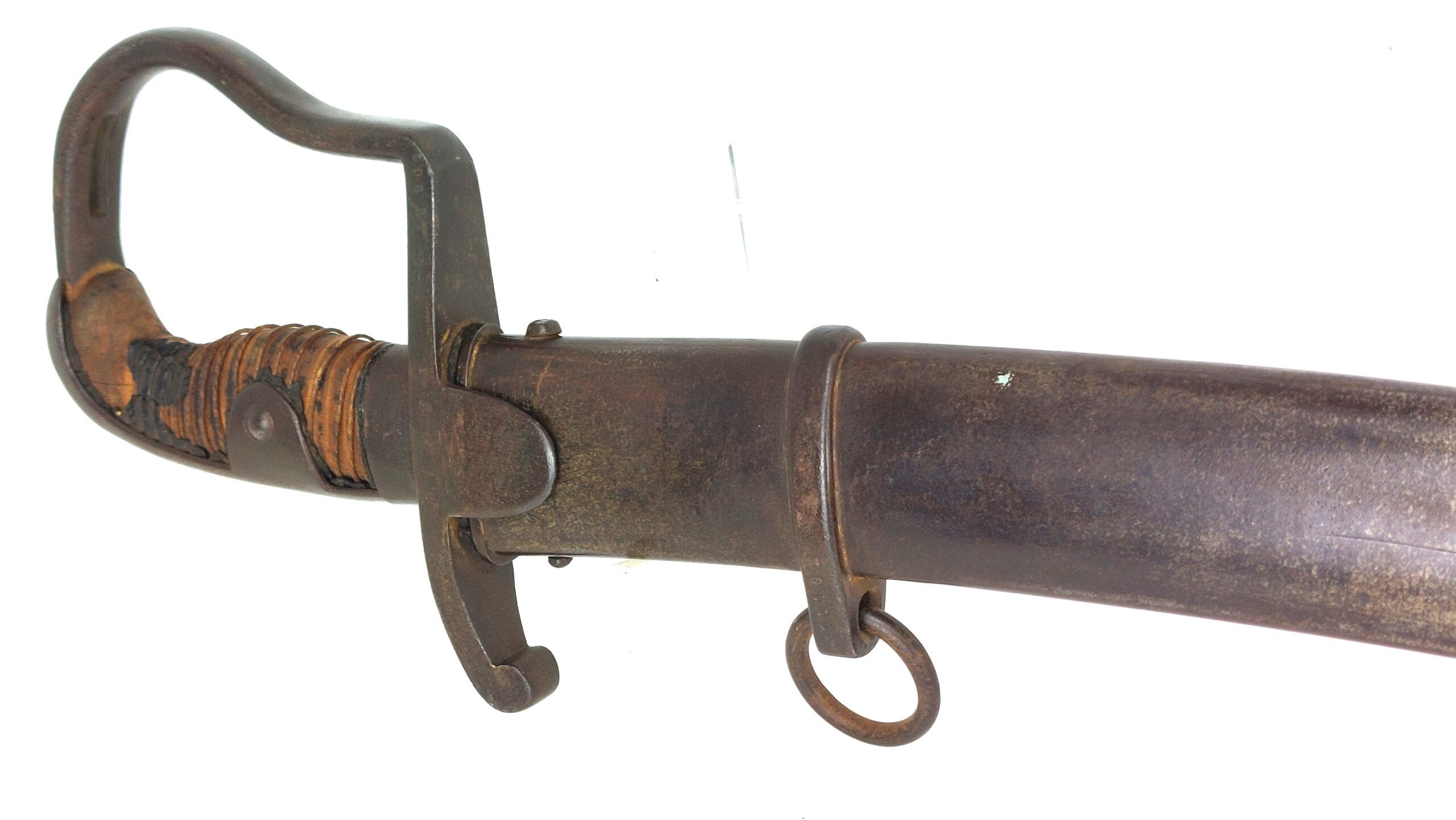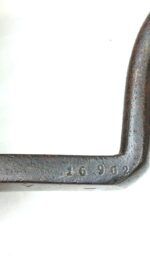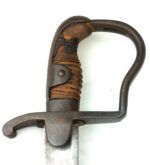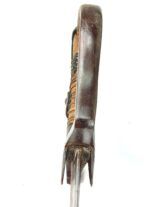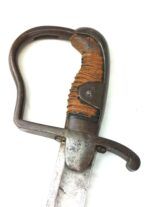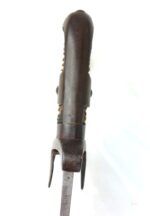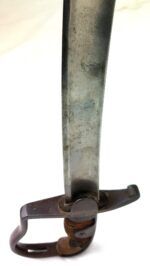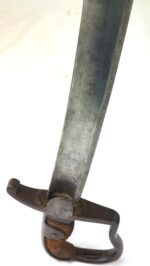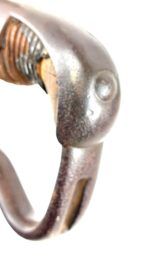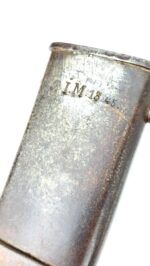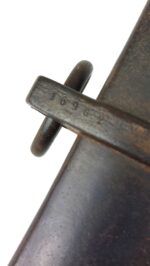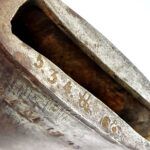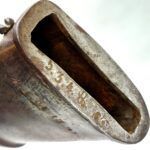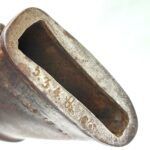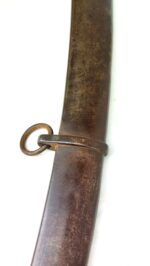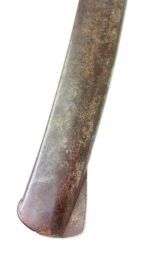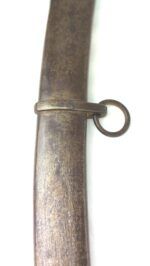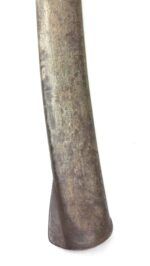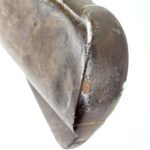*Prussian, c1814, Napoleonic War era, Model 1811 Blüchersable & Scabbard (1796 Pattern Light Cavalry Sword), Matching Regimental Marks, Made by Schnitzler & Kirchbaum of Solingen*
Approximate Measurements: 81.5cm blade, 94cm overall.
Marked on Crossguard: R.1.M.13.45, 169G2
Marked on Spine: 169. S.K
Marked underneath Crossguard: Crowned proofmark, 7, AA
Marked on Scabbard: R.1.M.13.45,
Marked on 1st ring mount on Scabbard: 169G2
Marked on scabbard throat: 5.3.4.66. 68
It was this sword that Napoleon himself complained about, stating that the shape of the blade made the tip especially vicious and therefore was an affront to humanity. The Prussian Model 1811 is very similar to the British 1796 Light Cavalry Sword, but it quite a bit more solid. Its’ matching regimental markings to the cross guard and scabbard “R.1.M.13.45” also confirm that it was used by the Prussians. R.I.M – Reserve Infanterie Munitionskolonne 13, sabre n° 45 – Reserve infantry ammunition column. Besides the four Army Corps that fought in the Waterloo Campaign that Blücher took with him into the Kingdom of the Netherlands, Prussia also had a reserve army stationed at home in order to defend its borders.
It is maker marked on the spine “S.K.” for Schnitzler & Kirchbaum of Solingen who started making M1811’s in 1814. Marked withFraktur proofmark underneath the crossguard. Heavy single edged curved blade, with the characteristic increase in blade width near to the point, and single broad fuller on each side. Simple ‘stirrup’ form hilt with riveted grip “ears”, a single iron knucklebow and quillon and wide single rounded langets. Original wood grip and leather over cord wrap with most of the leather worn away.
Housed in original steel scabbard fitted with two loose rings and issue stamps.
Background:
The Prussian Model 1811 sabre, known as the “Blüchersabel,” was a direct adaptation of the British 1796 Pattern Light Cavalry sabre. This design was adopted by the Prussian cavalry in 1811 and received its informal name after Field Marshal Gebhard Leberecht von Blücher, the famous Prussian commander at the Battle of Waterloo in 1815.
The development of the Prussian Model 1811 sabre can be traced back to 1809 when Prussian troops first received British P1796 sabres. Between 1807 and 1813, around 10,000 British sabres were supplied to the Prussians, who, due to the limitations imposed by the Treaty of Tilsit and the destruction of their own arms industry, relied heavily on these British imports.
Following Napoleon’s defeat at the Battle of Leipzig in 1813 and the liberation of the Solingen sword-making center from French control, Prussia began its own production of the modified sabre in early 1814. The initial Prussian-made 1811 sabres, produced by firms such as Schimmelbusch and Joest, Weyersberg, and Schnitzler & Kirschbaum*, were modeled after the British design but featured some improvements to address feedback from British cavalrymen. These enhancements included a stronger and more robust hilt and a heavier scabbard drag.
The blade of the Model 1811 retained the characteristic widening near the tip, which gave it devastating cutting power despite affecting balance. The hilt was made thicker and heavier than the British P1796 to provide increased durability and stability. The Prussian design became so well-regarded that it remained in service, with modifications, until the outbreak of World War II in 1939. This longevity is a testament to its effectiveness and durability on the battlefield.
The Blüchersabel not only served as a key weapon during the Napoleonic Wars but also saw extensive use by various Prussian and later German cavalry units through multiple conflicts, further solidifying its legacy as a versatile and influential design in military swordsmanship.
*According to Dellar and Bink, the earliest M1811 were made by Solingen makers from 1814: “On their way through Prussia, the French destroyed Potsdam’s mills and grinding stones and so it was that Prussia turned to Solingen for manufacture of its new sabre when that centre was freed from French control in December 1813. Hence, the first model 1811 sabres are thought to have been produced in Solingen by the firms of Schimmelbusch and Joest, Weyersberg and Schnitzler & Kirschbaum, at the beginning of 1814”.
*Condition*
Overall good condition for a sword more than 200 years old! The leather is mostly worn away on the grip. The scabbard fits securely. Please see photographs as part of the condition report.
RQMFEOXAOOO_7713181975


